
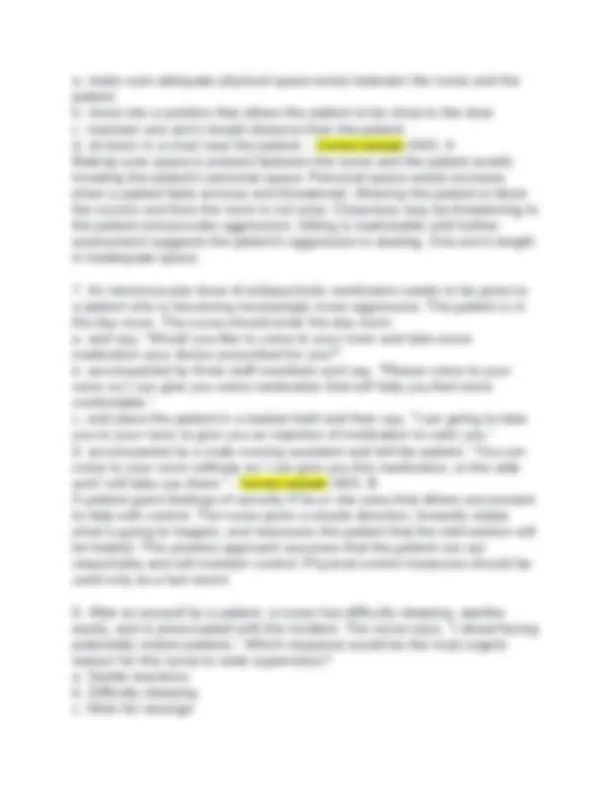
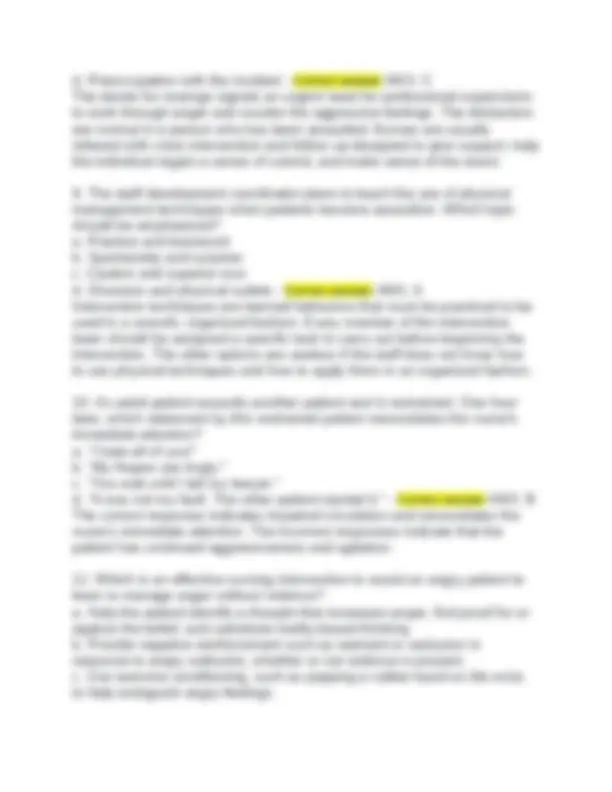
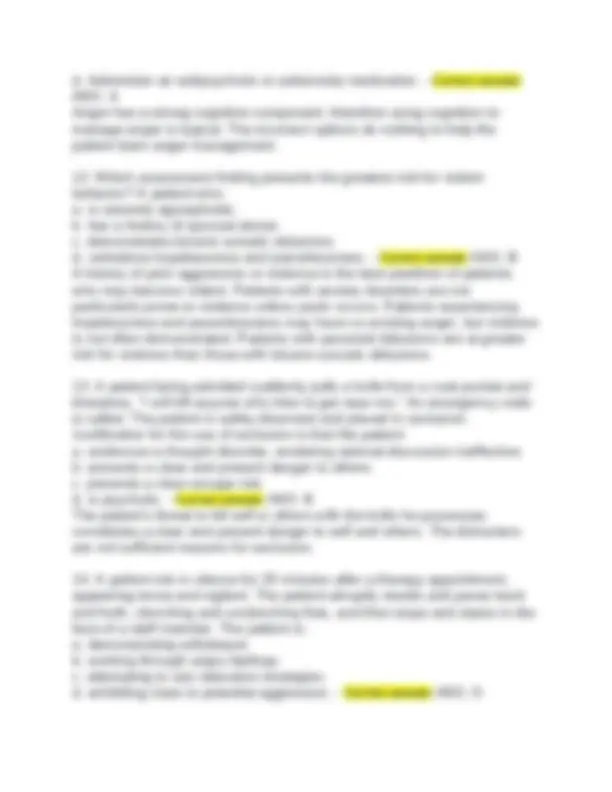
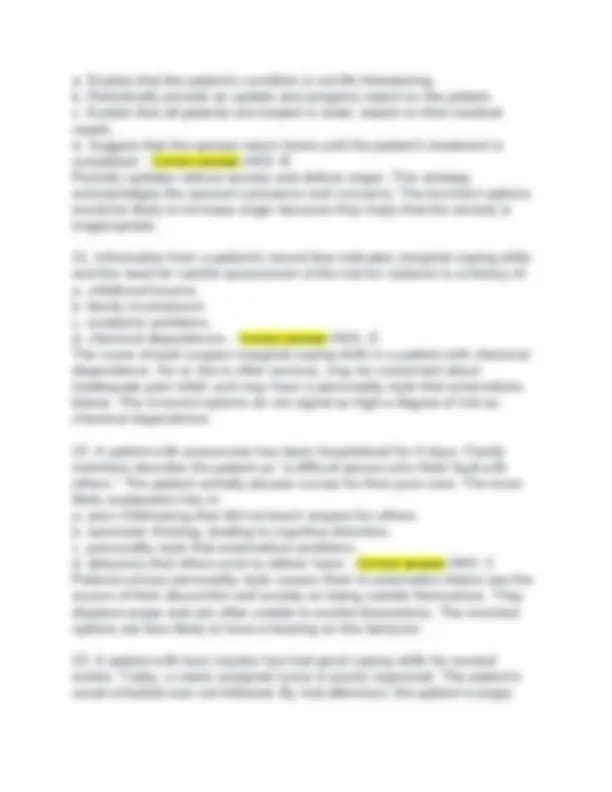

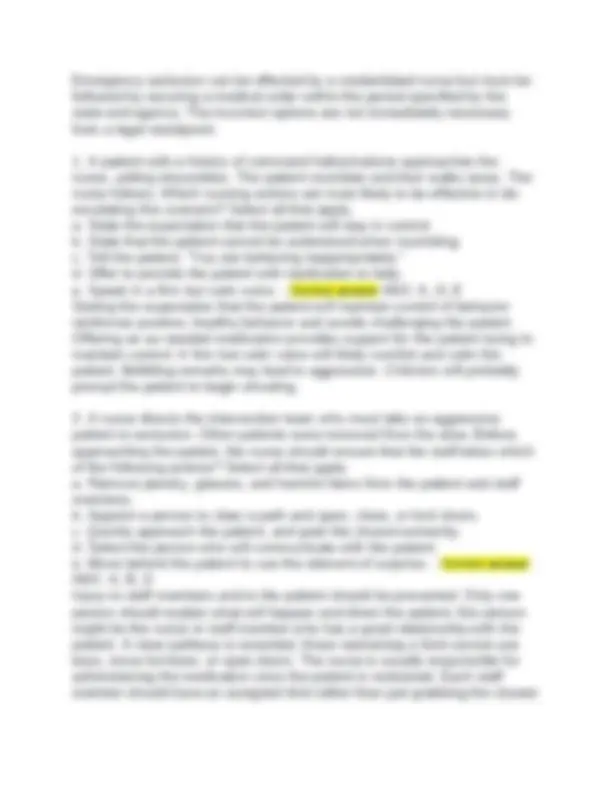
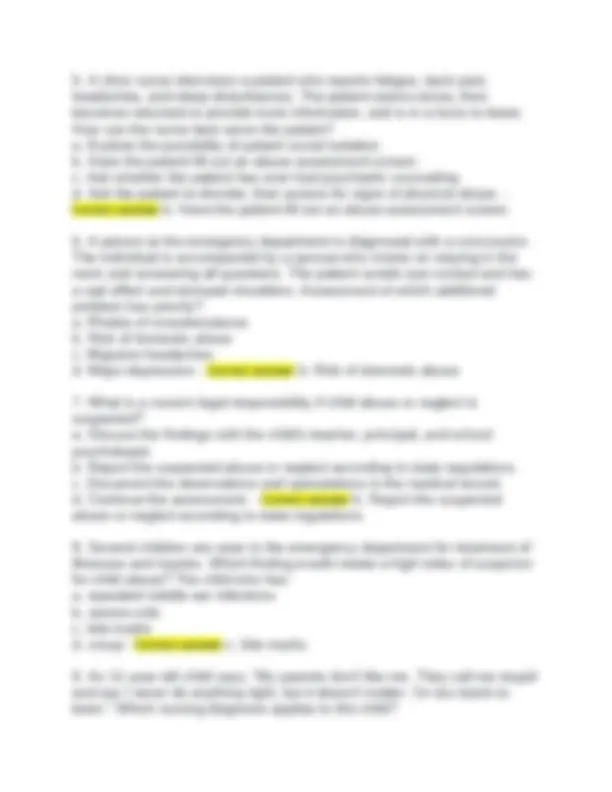
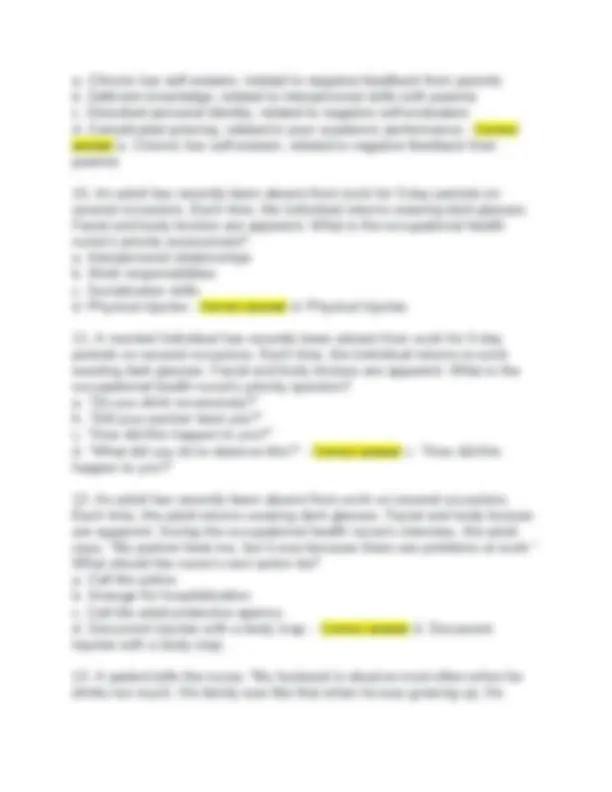
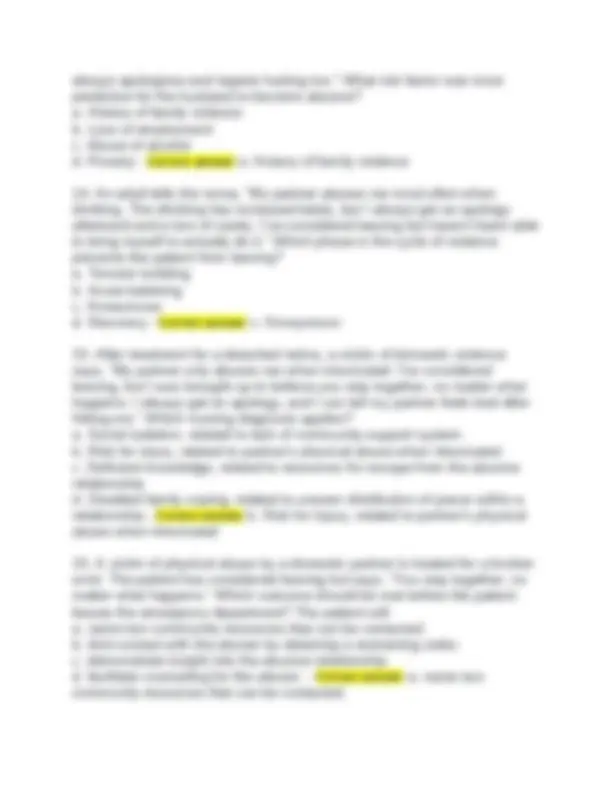
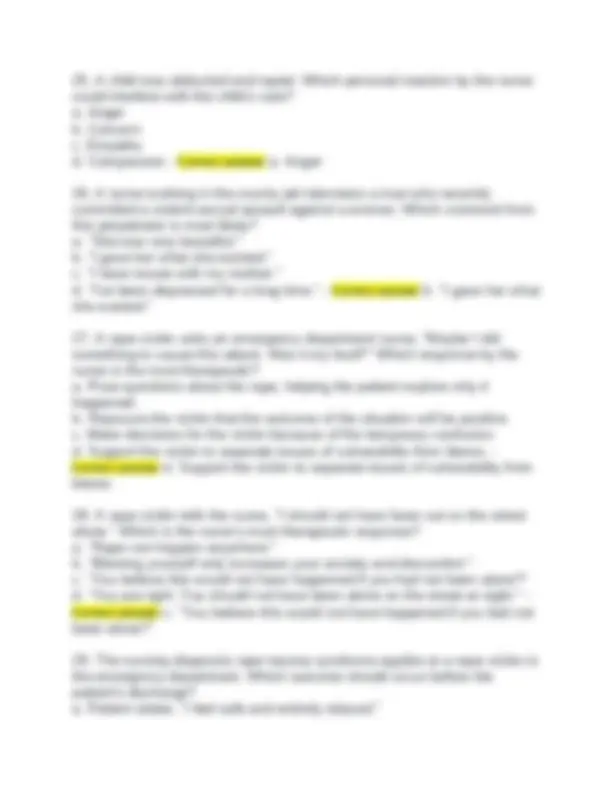
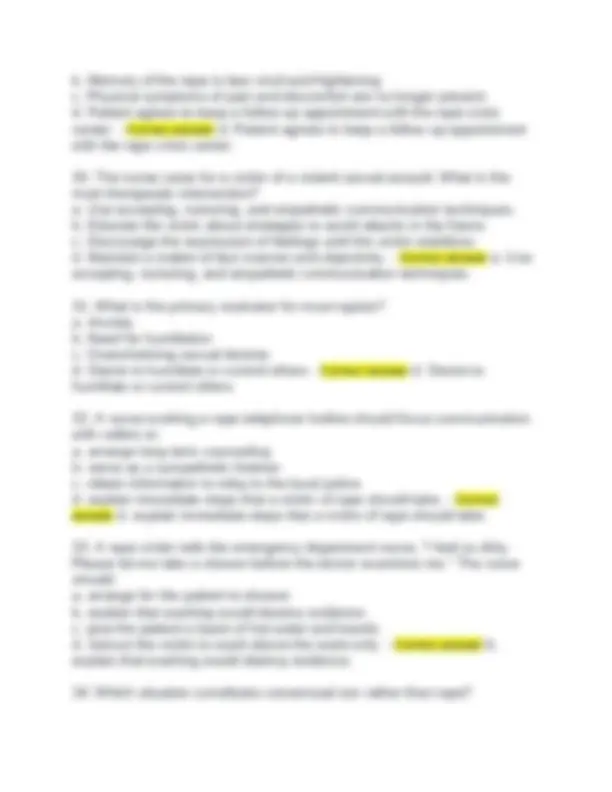
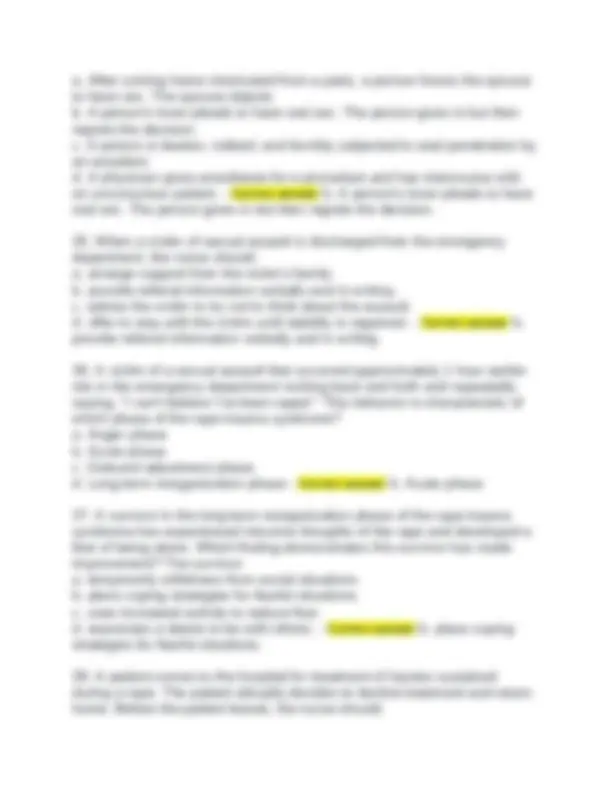
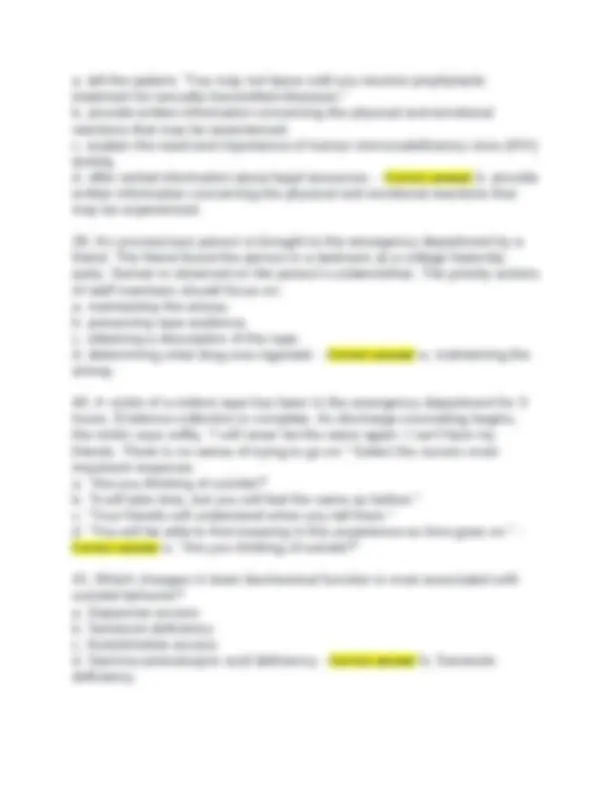
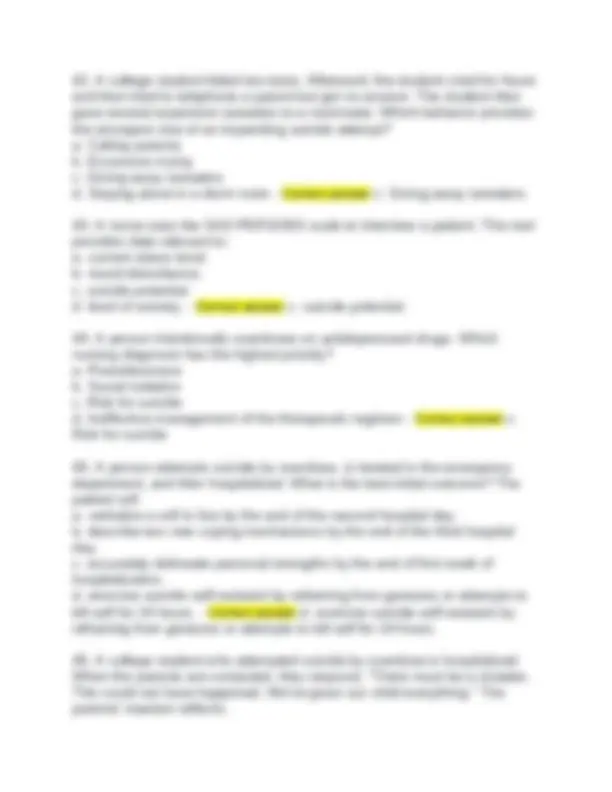
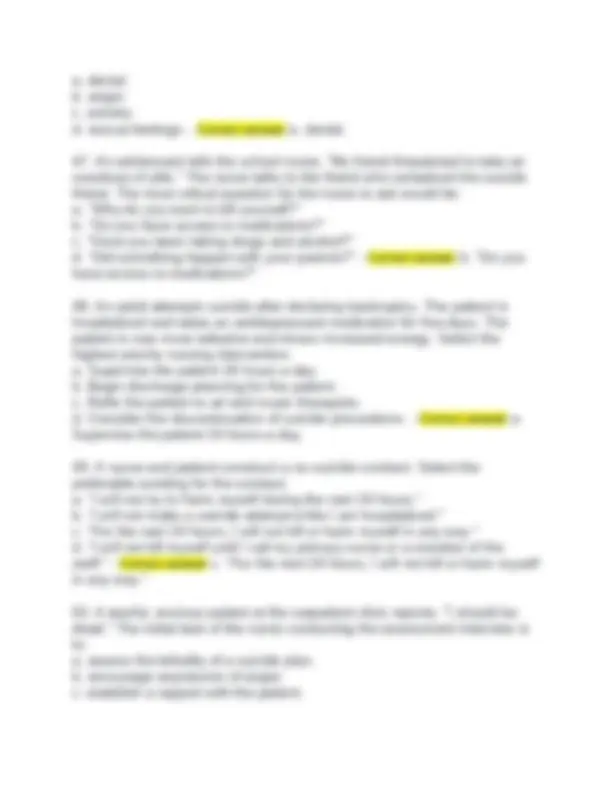
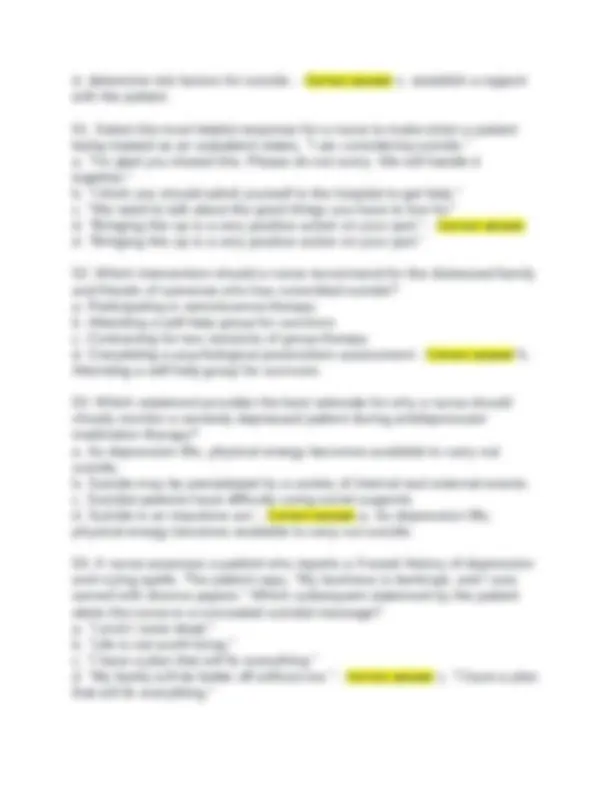
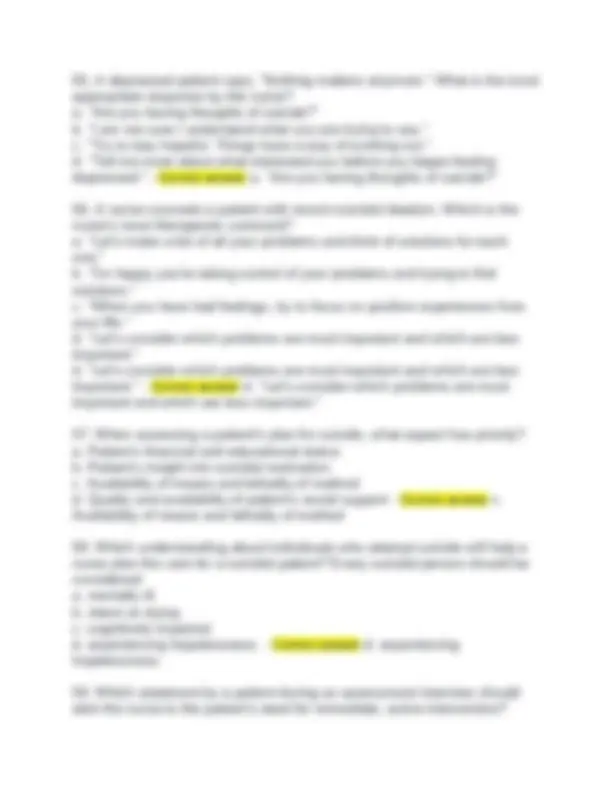
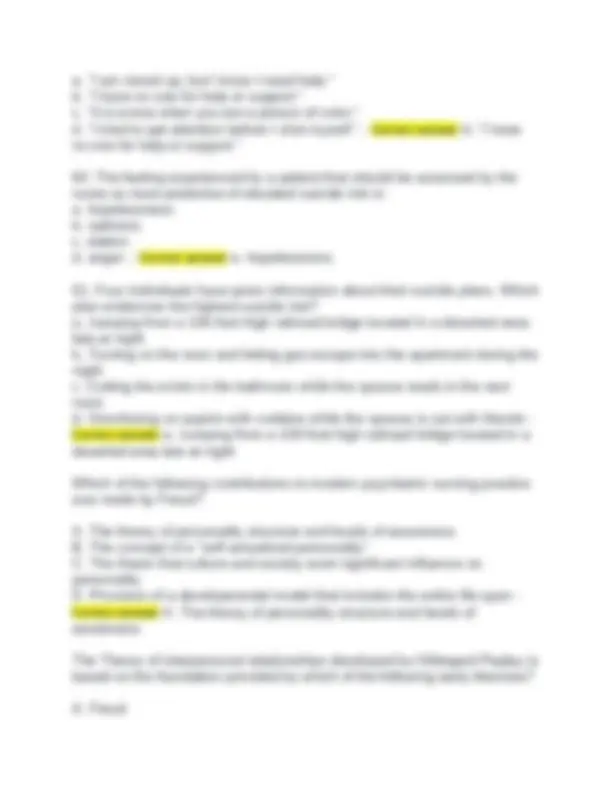
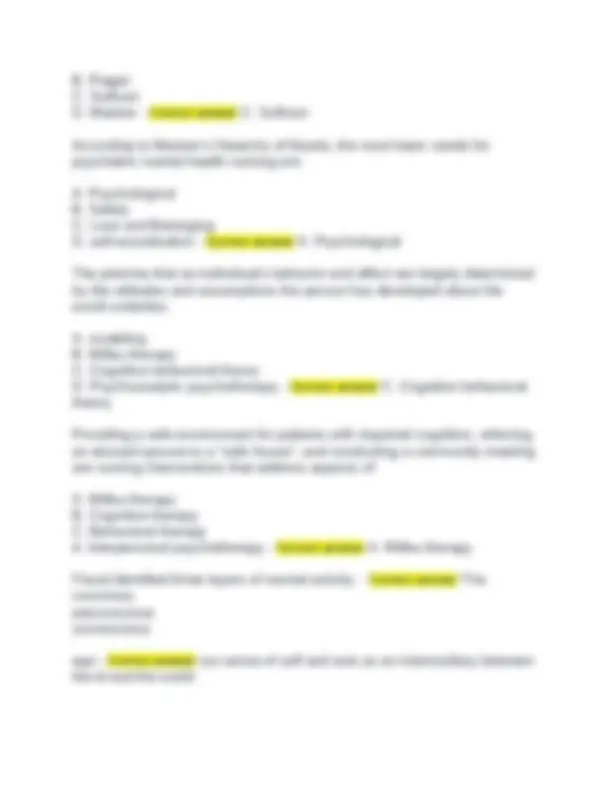
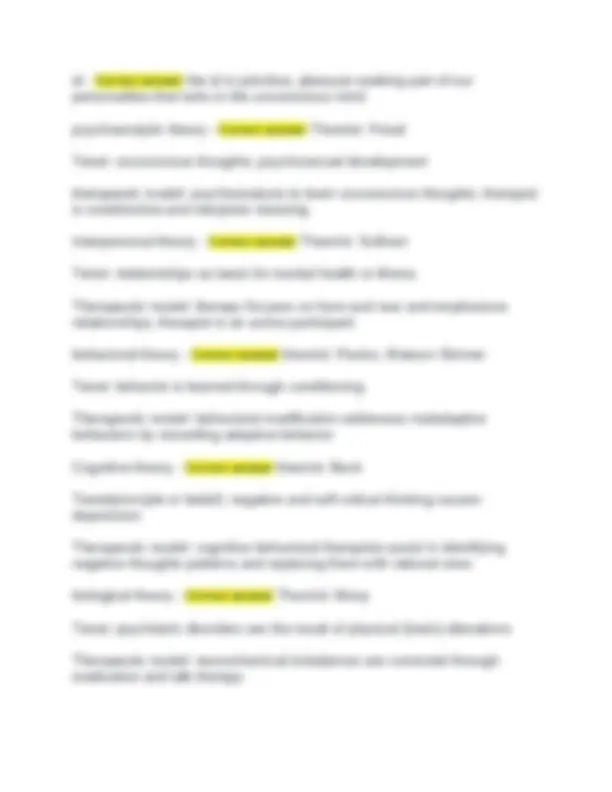
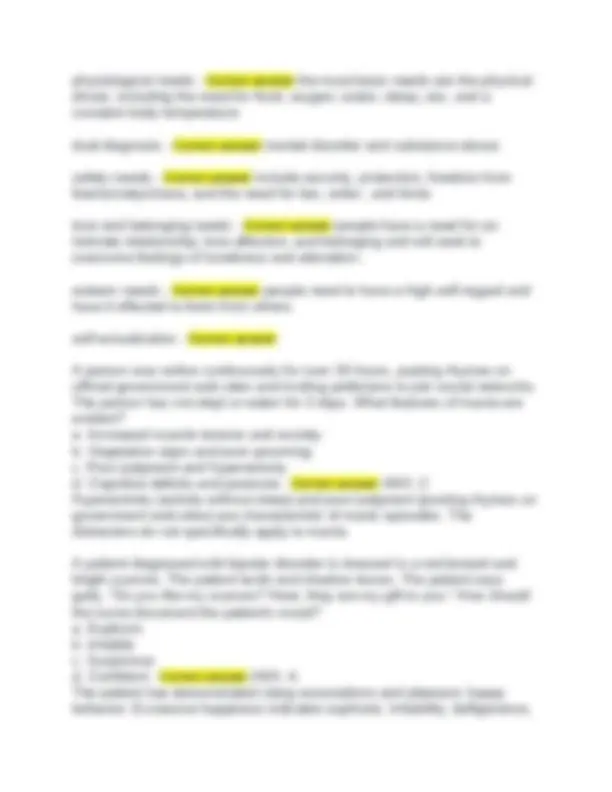
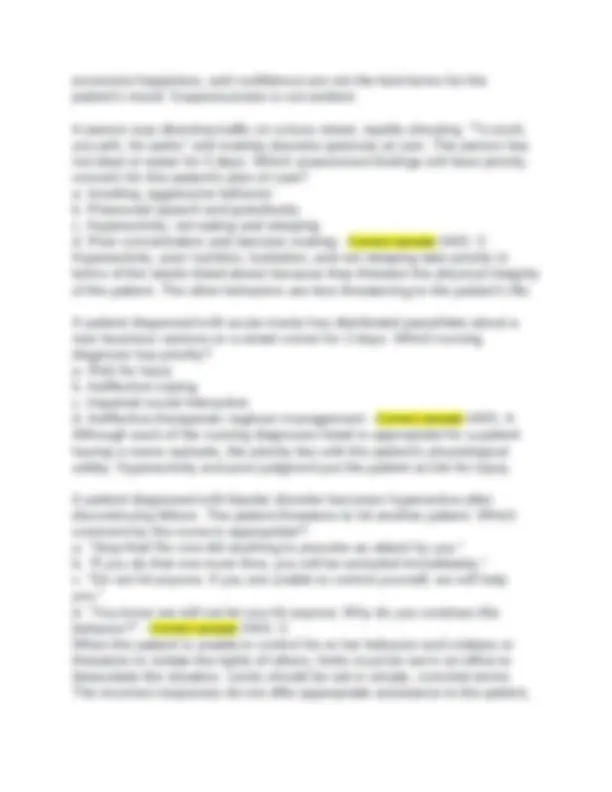
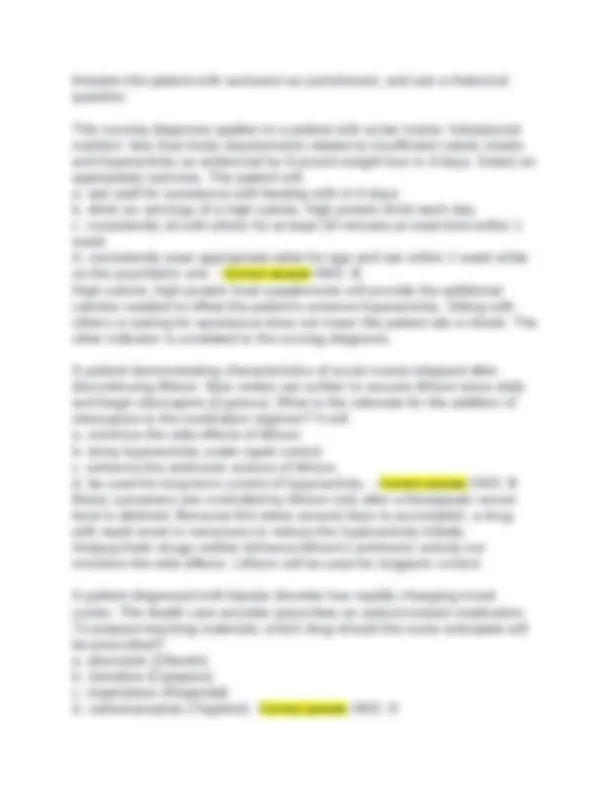
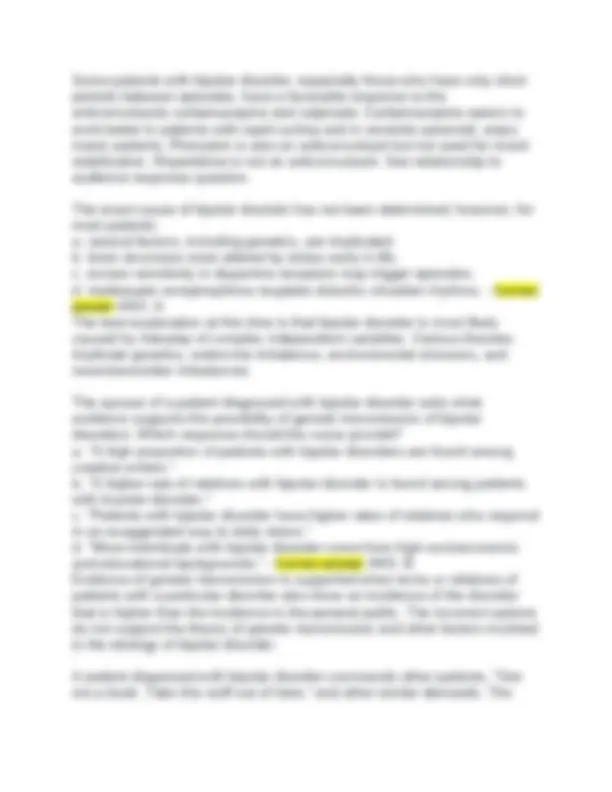
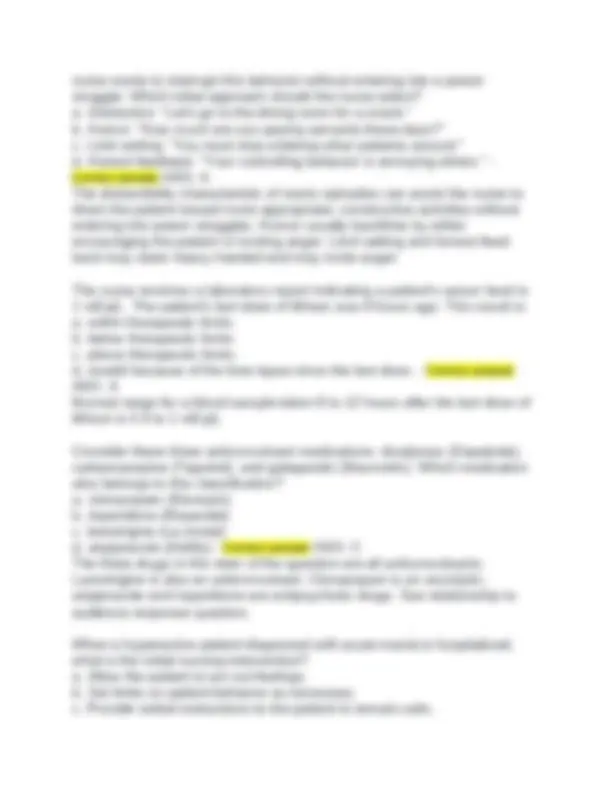
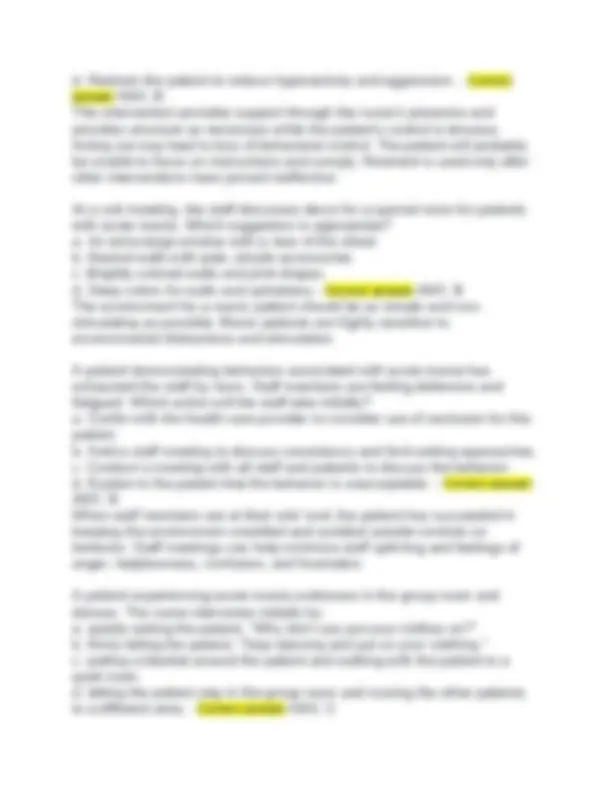
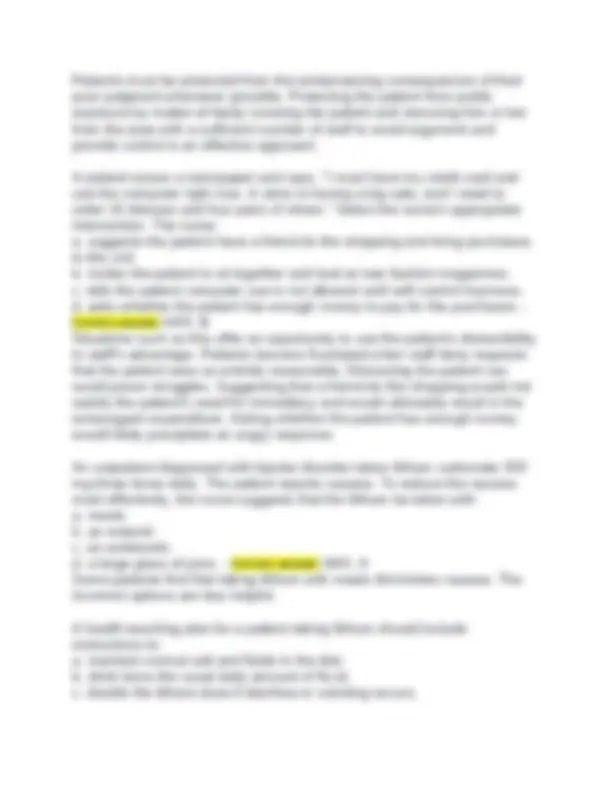
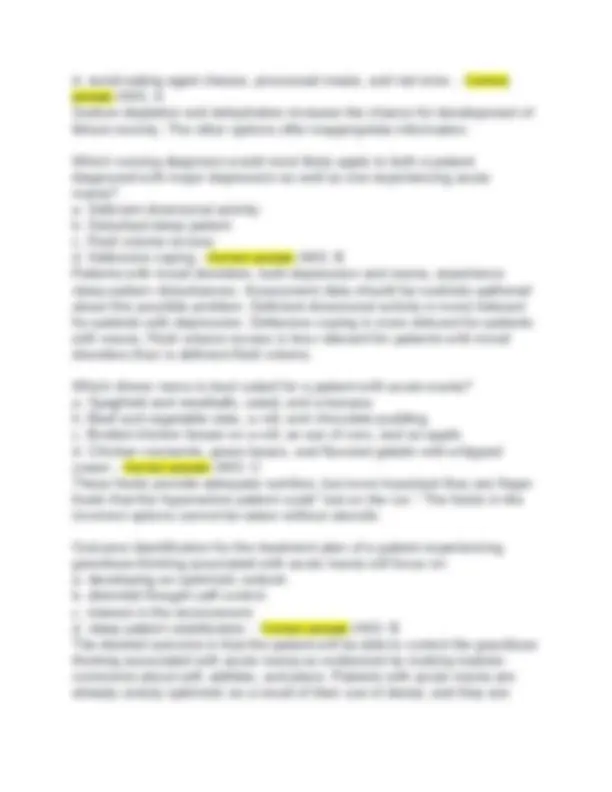
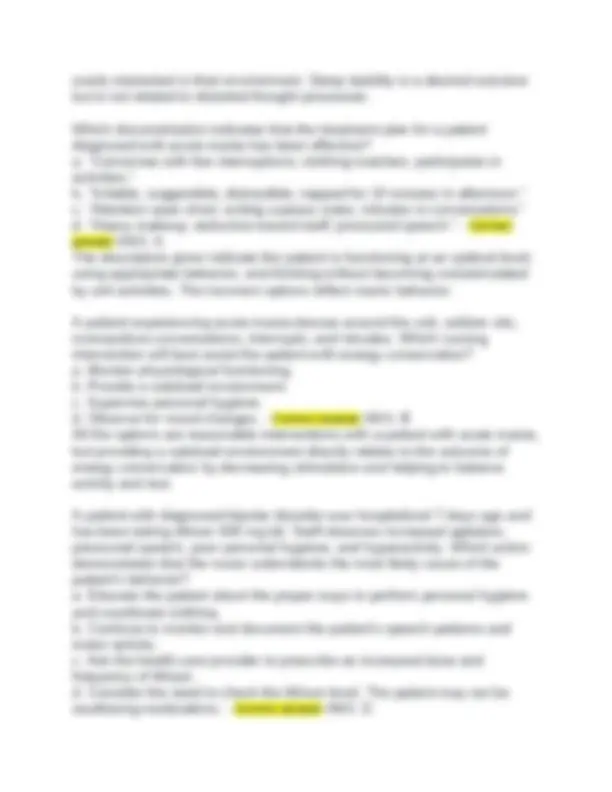
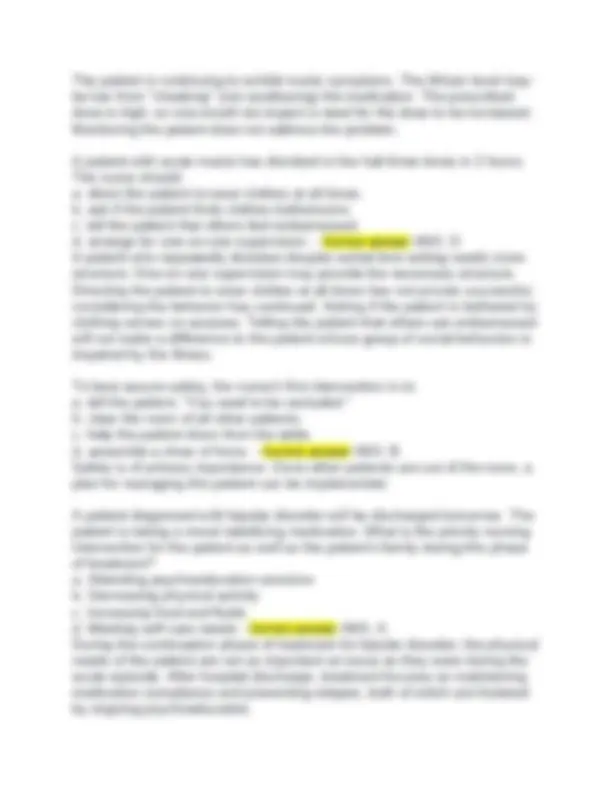
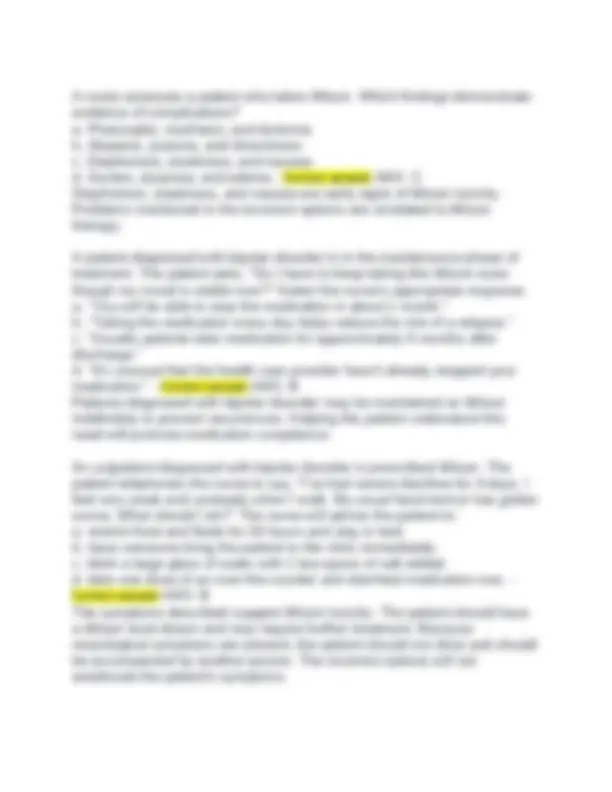

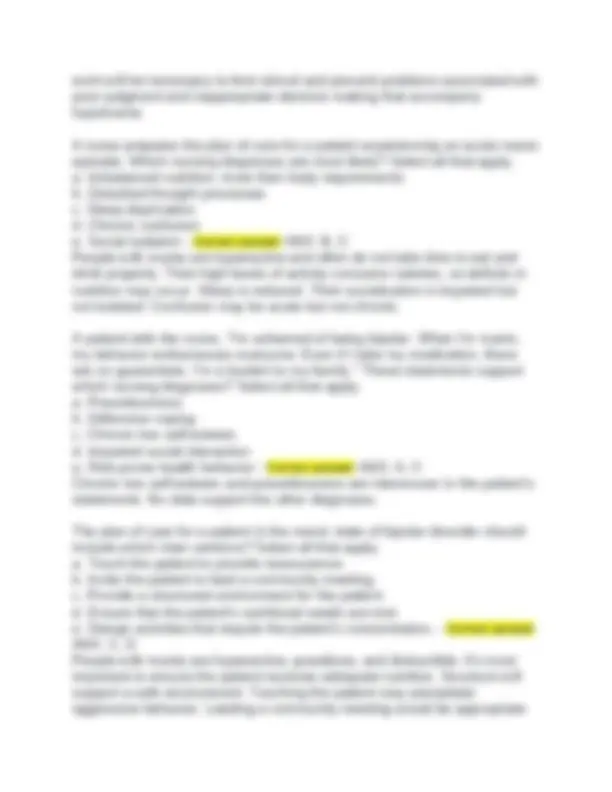
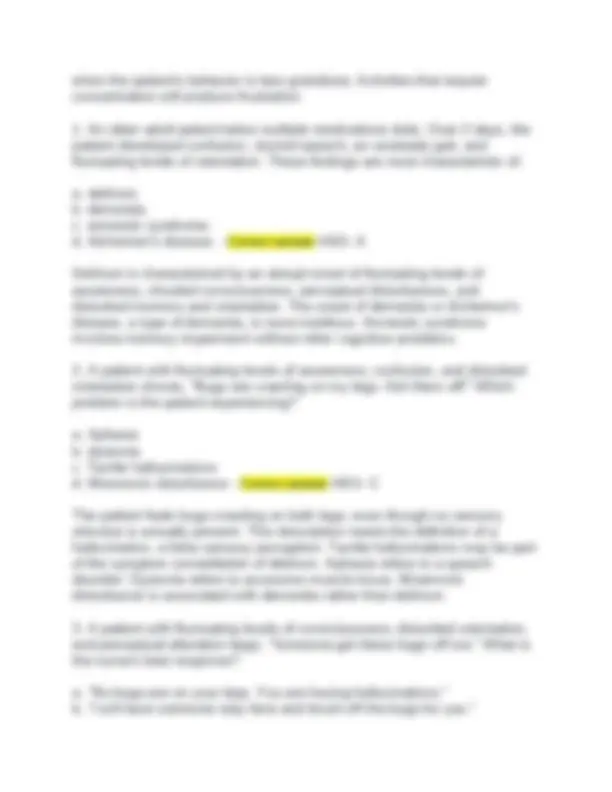
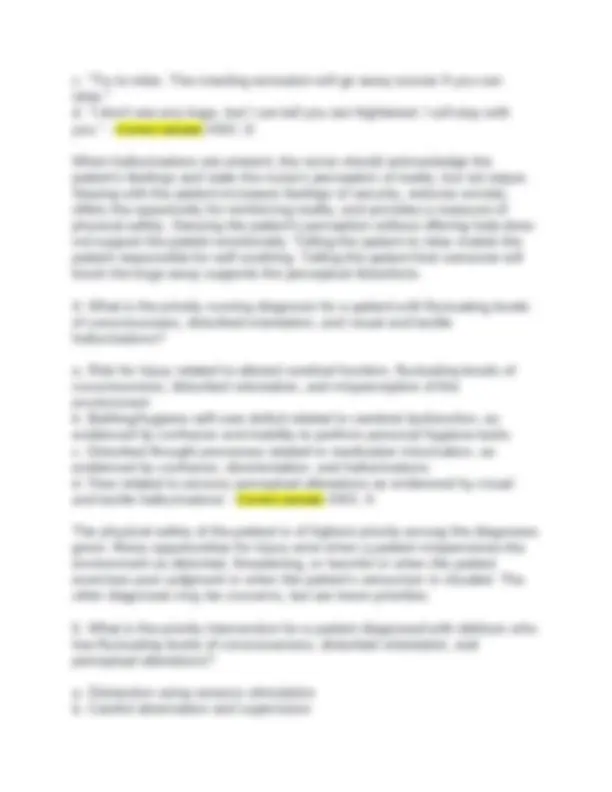
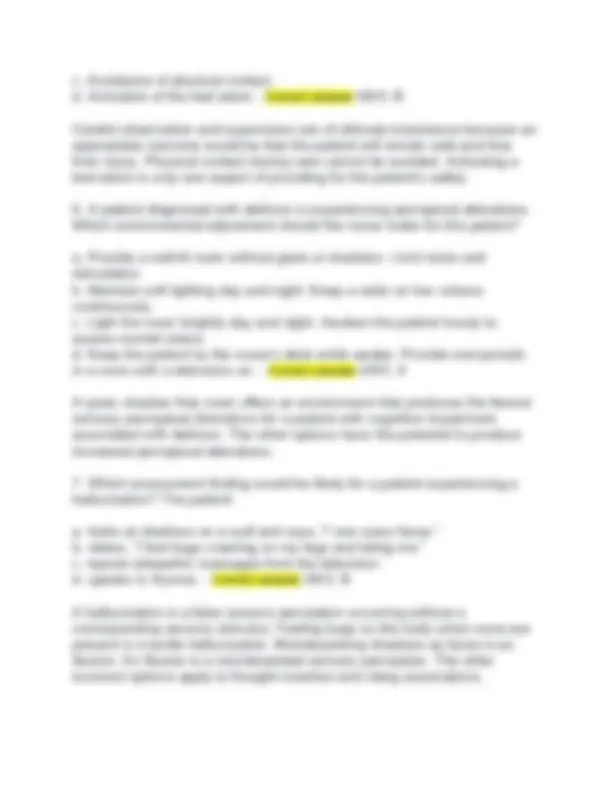
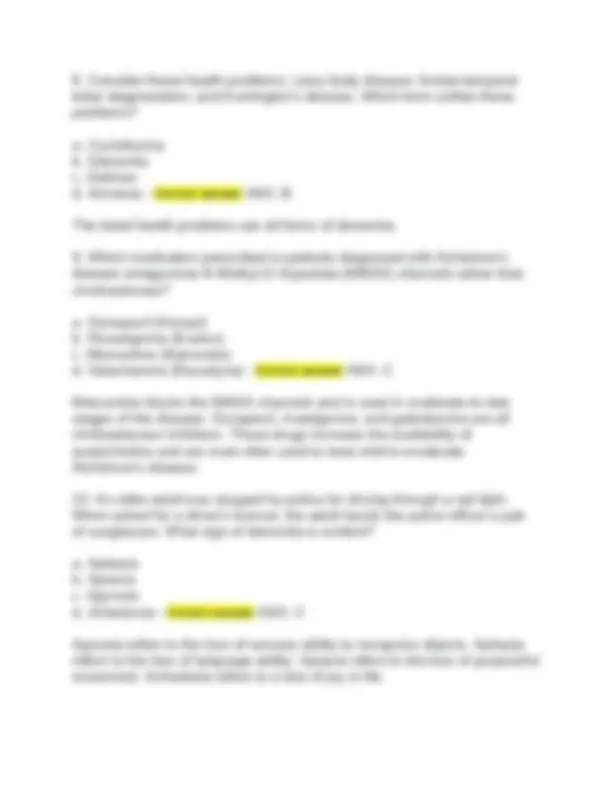
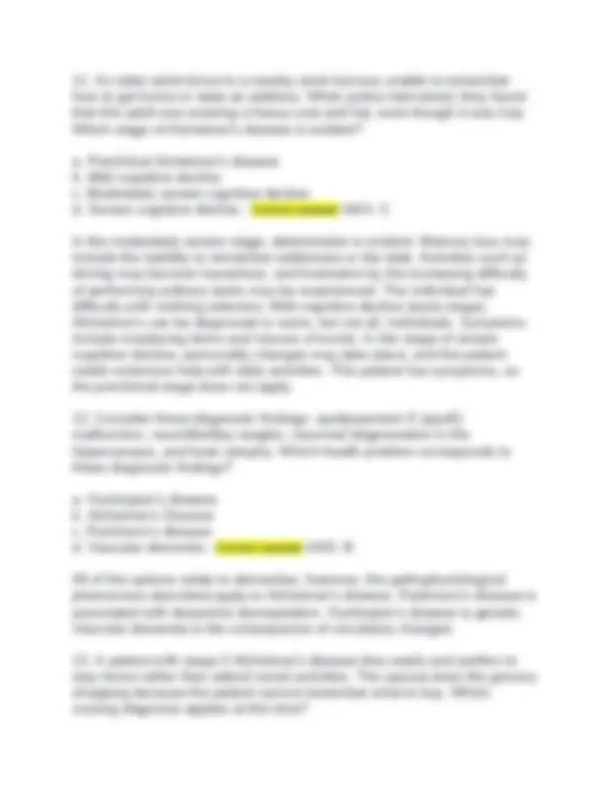
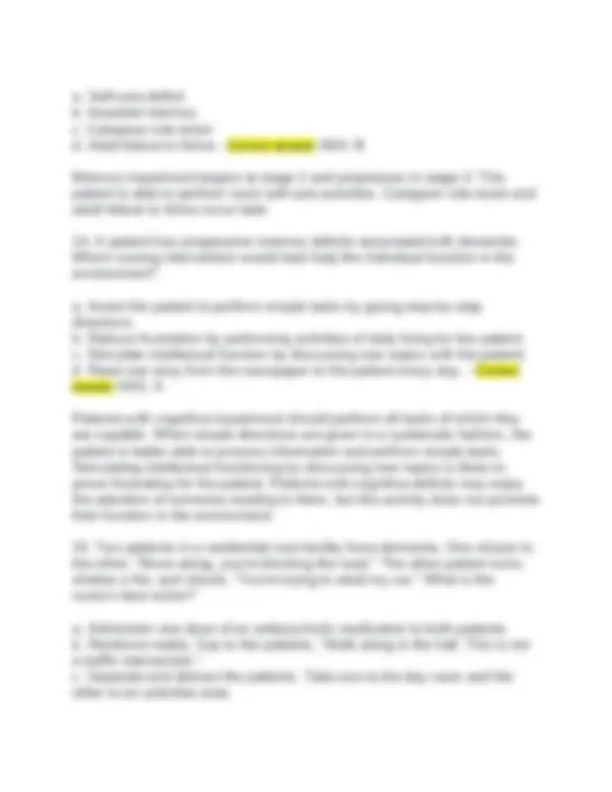
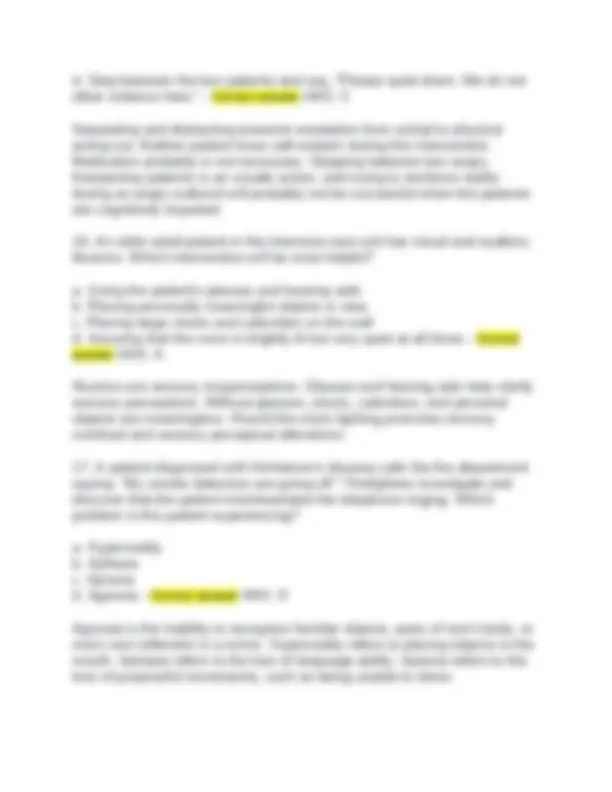
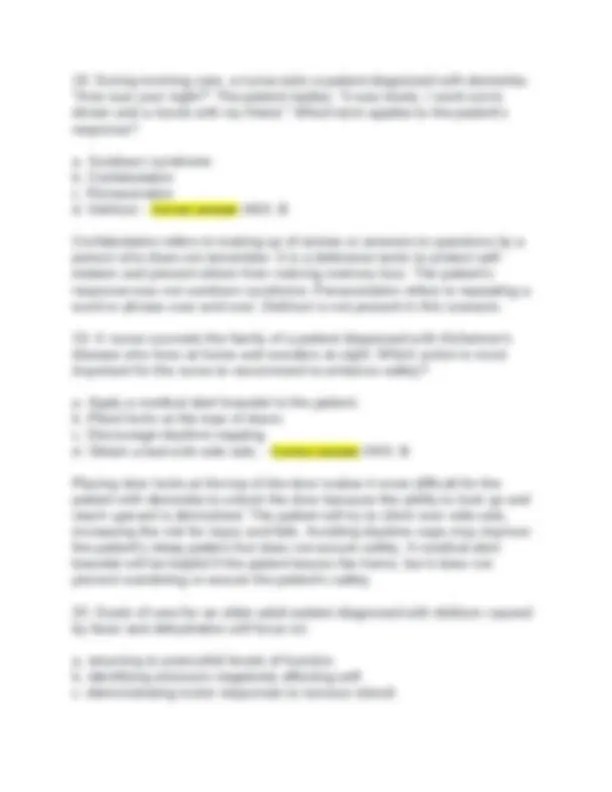
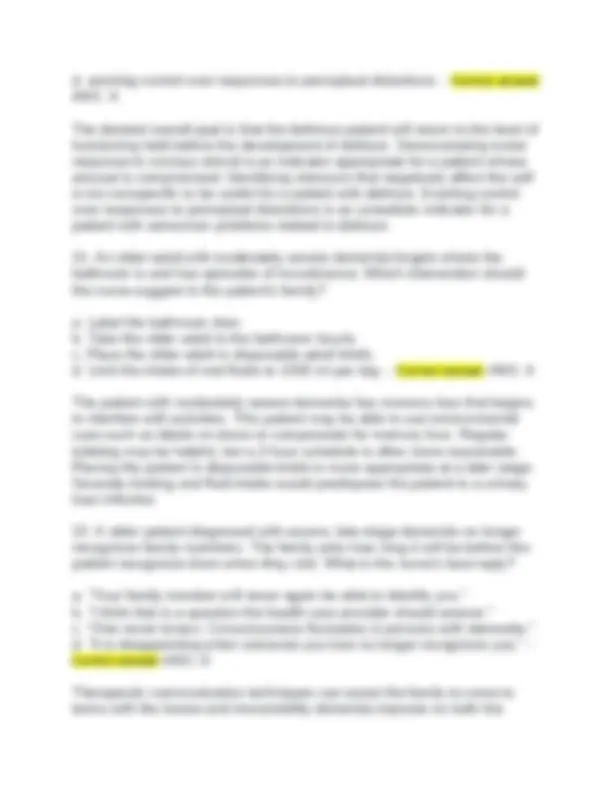
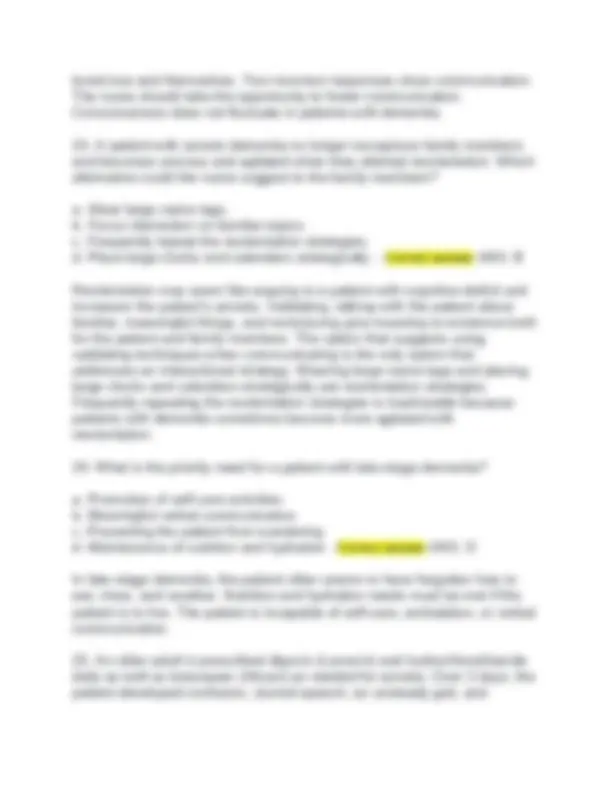
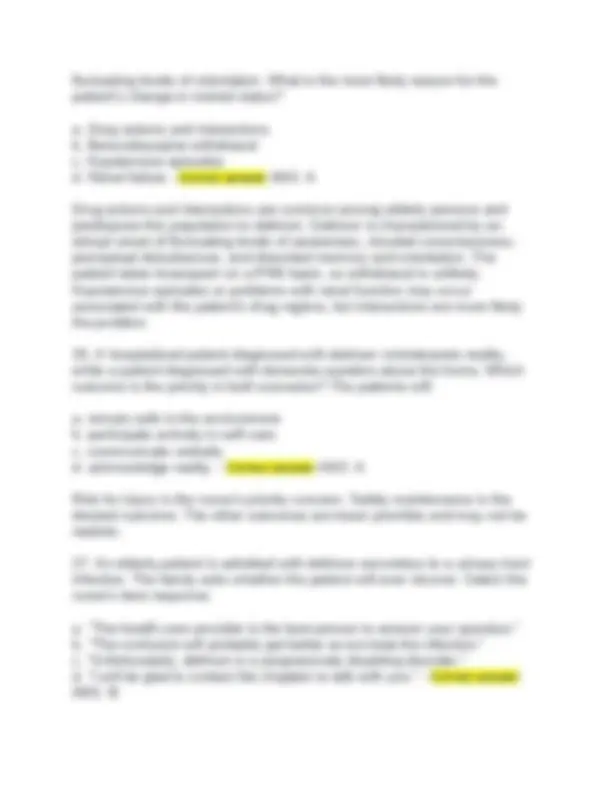
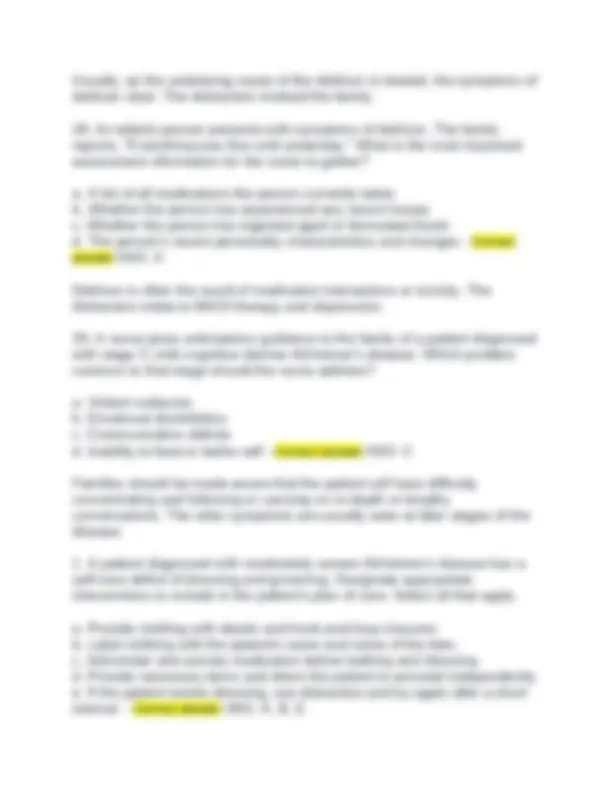
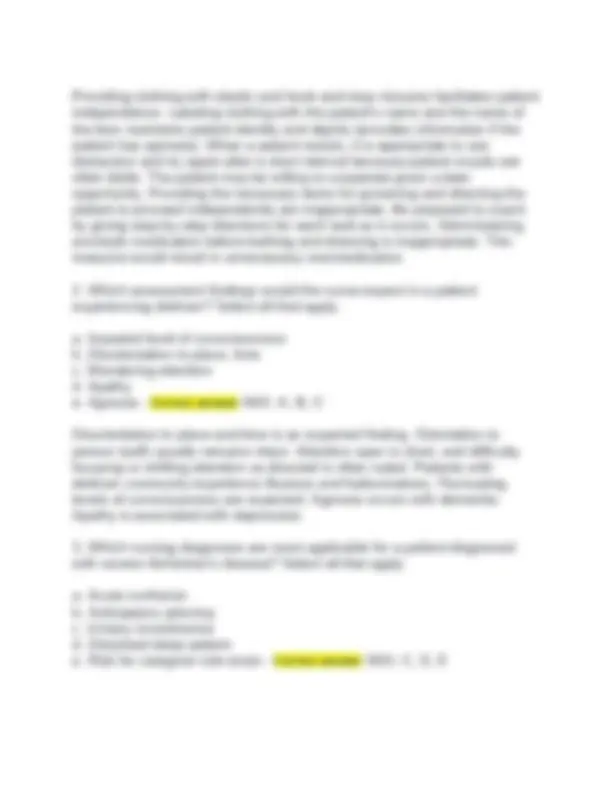
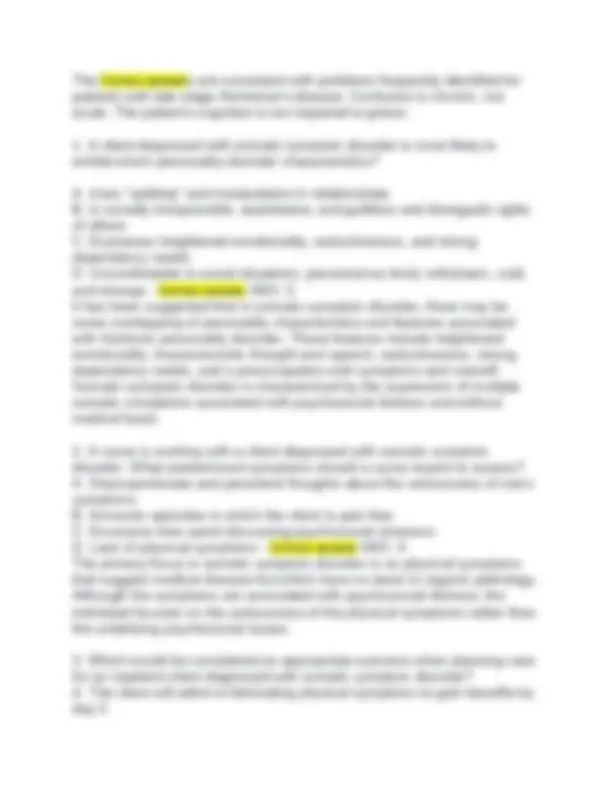
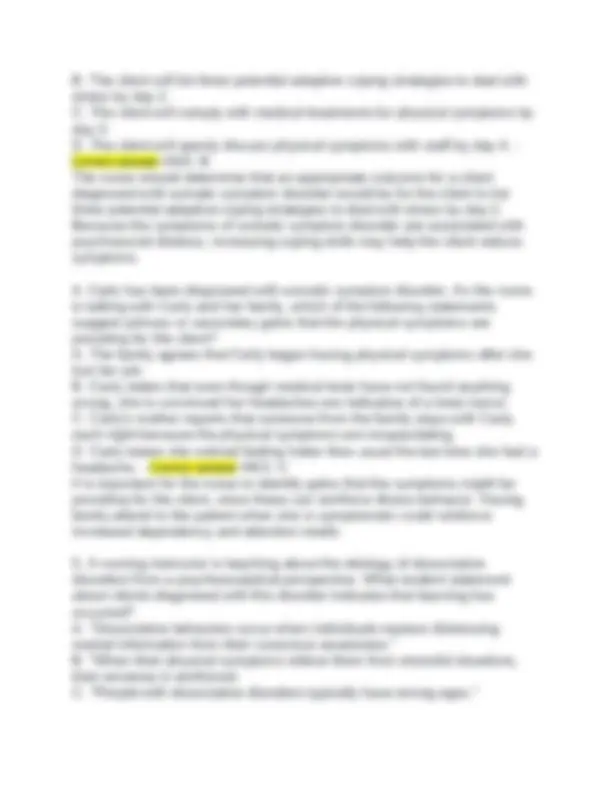
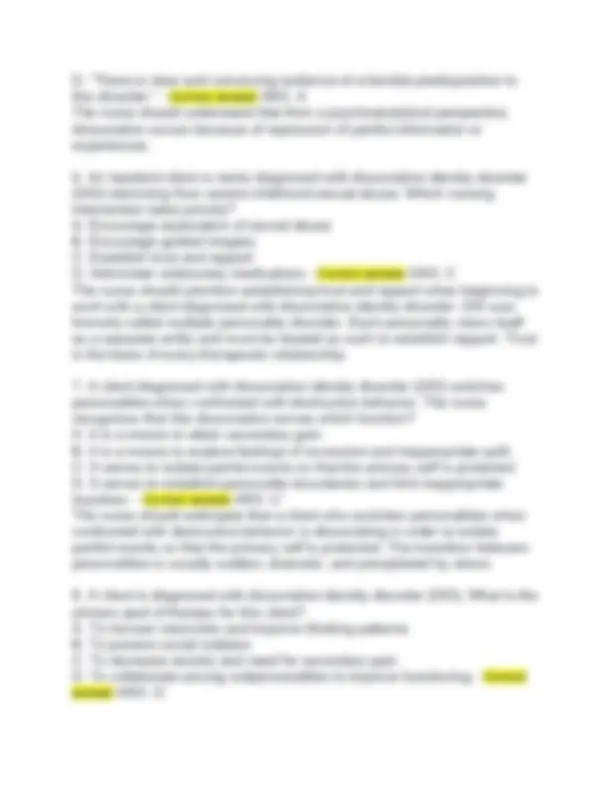
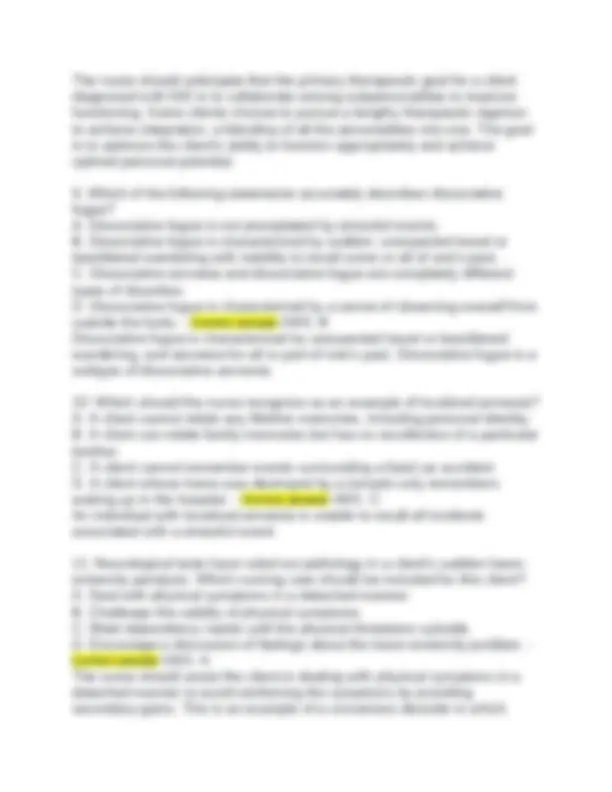

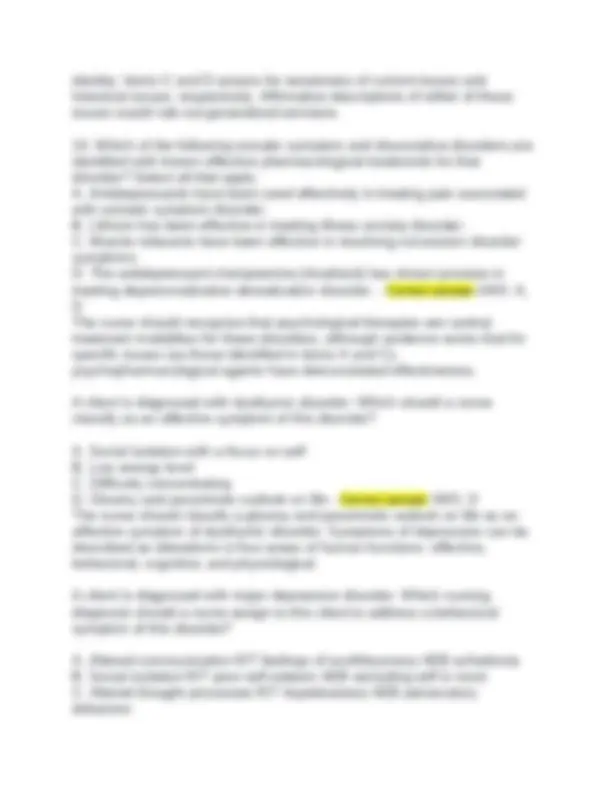
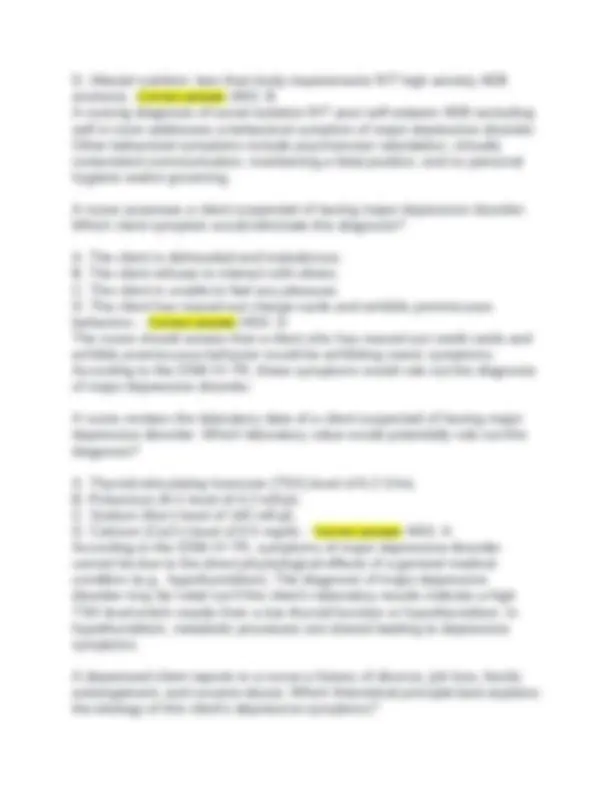
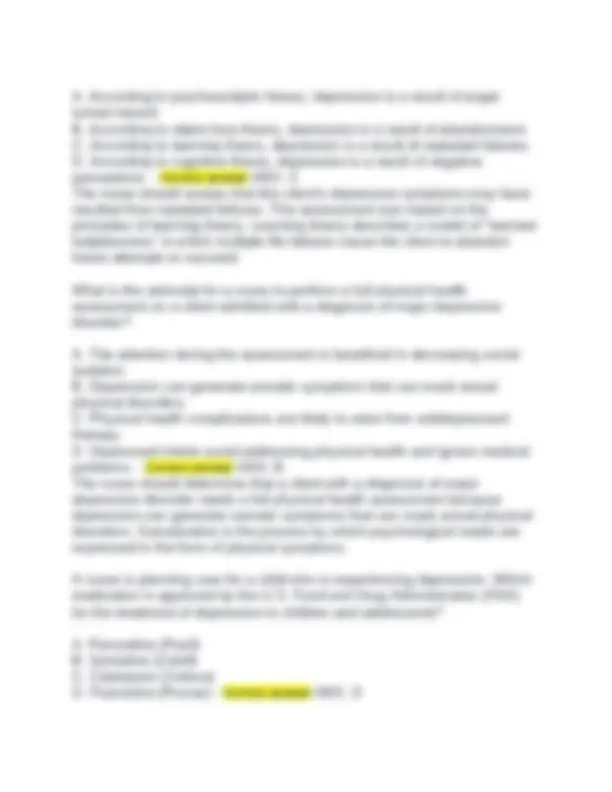
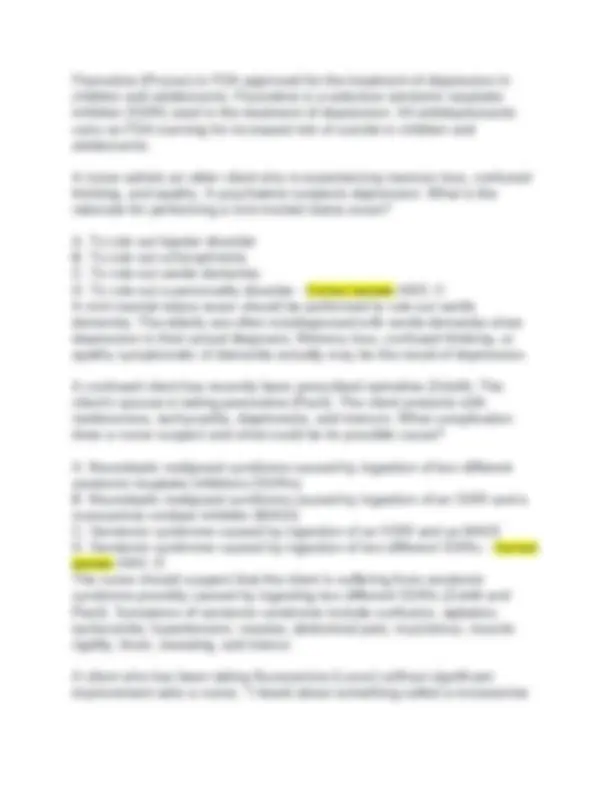
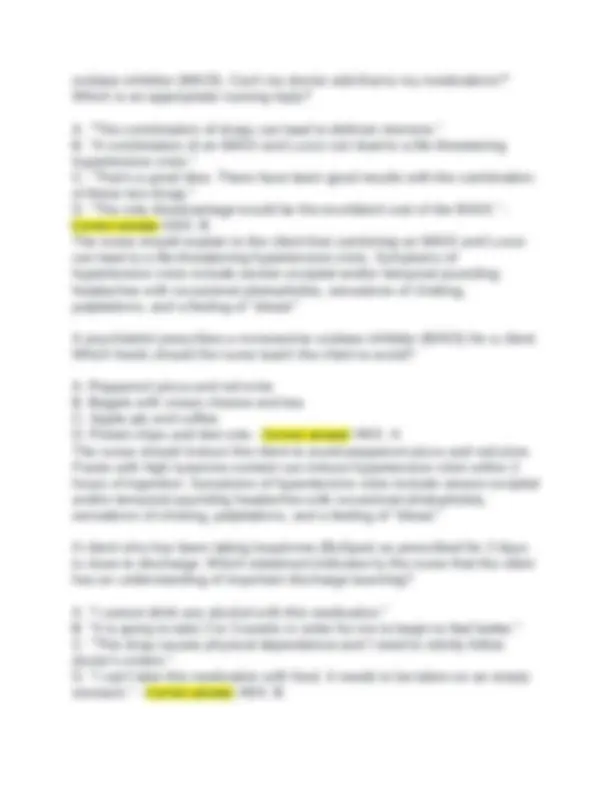
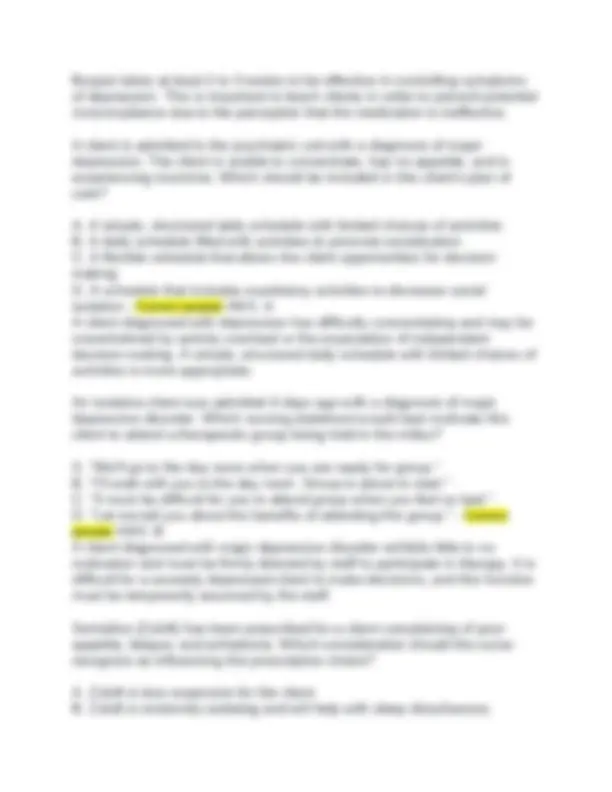
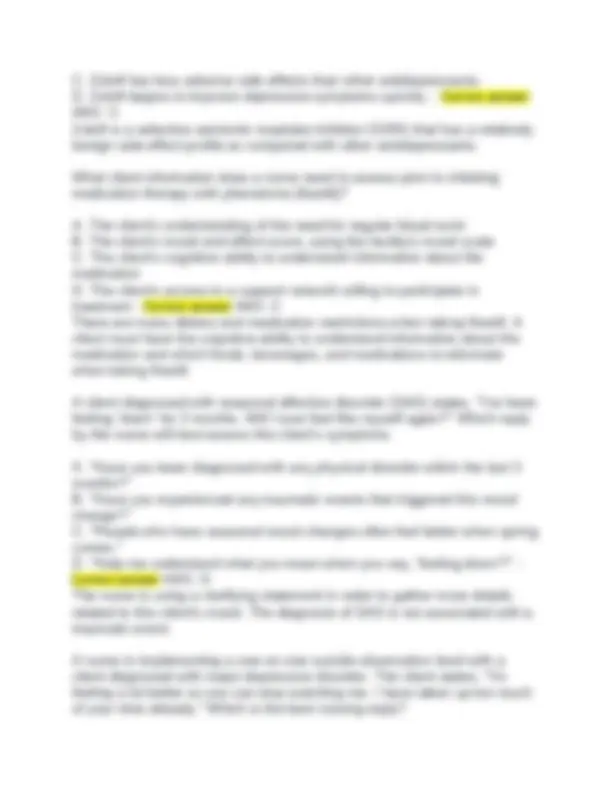
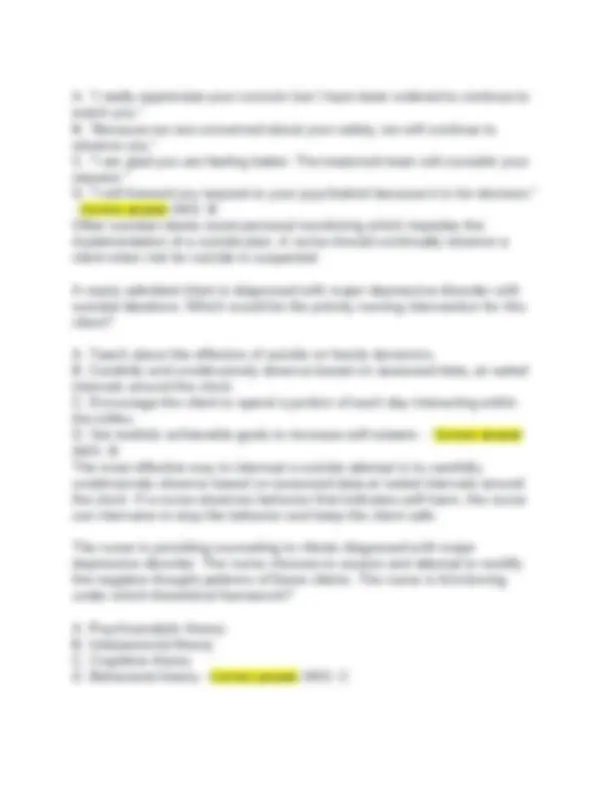
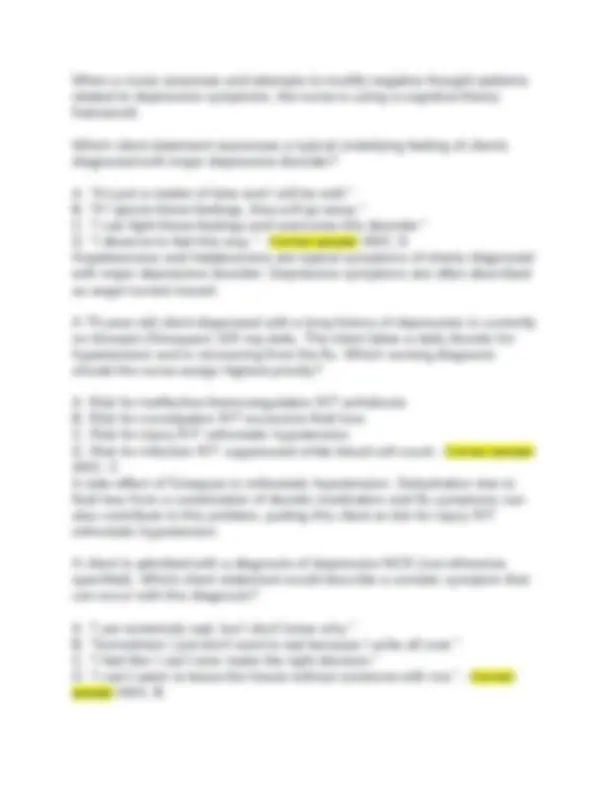
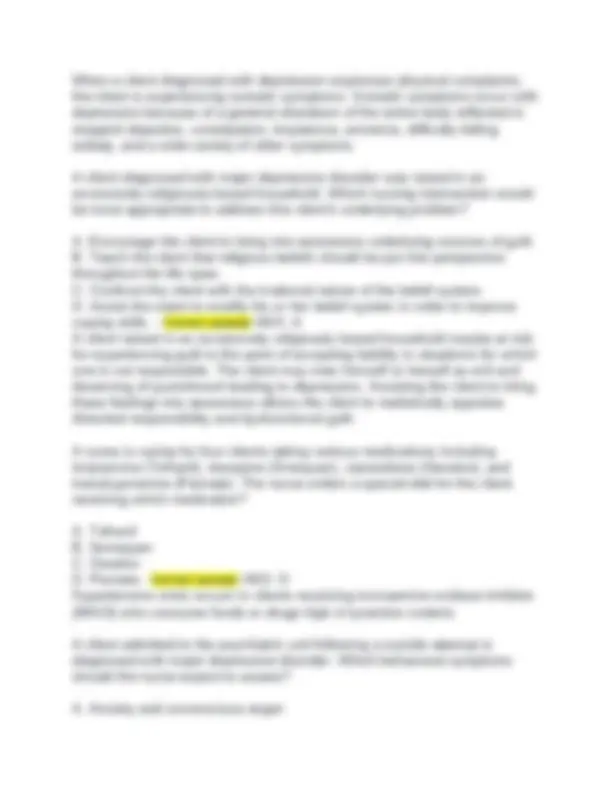
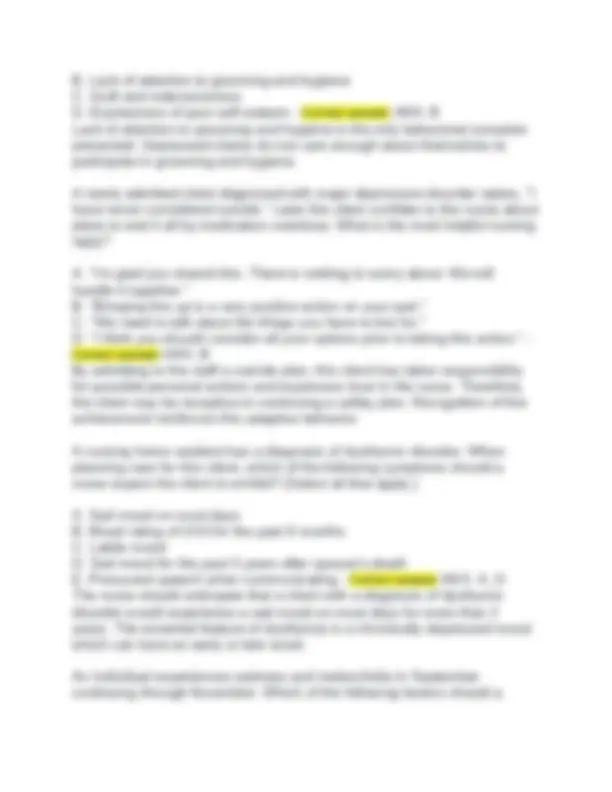
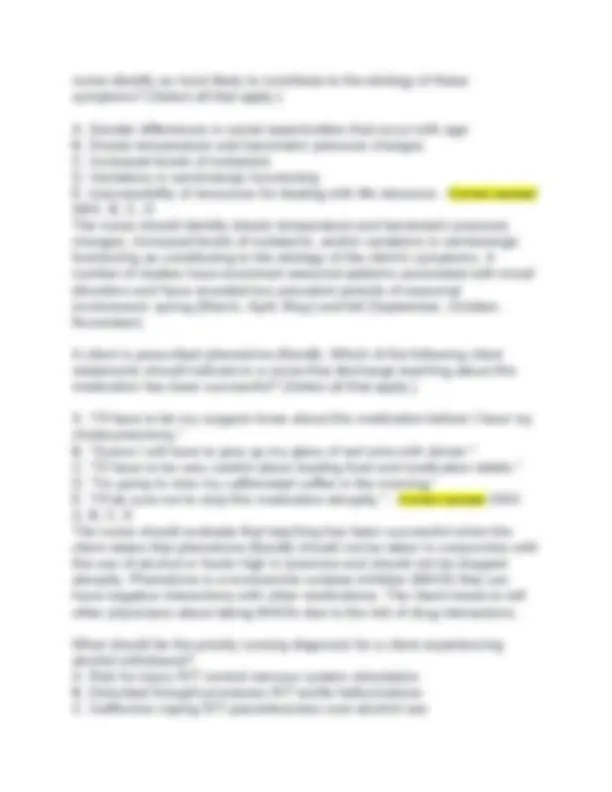
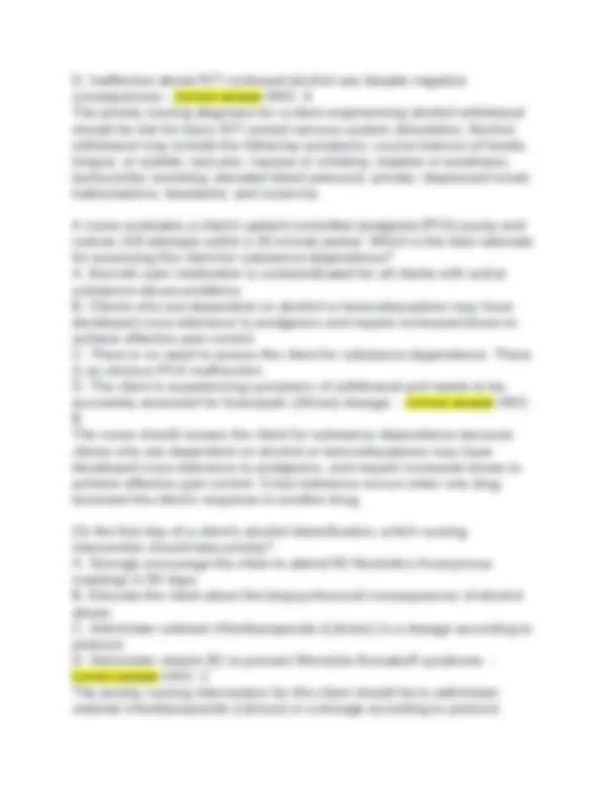
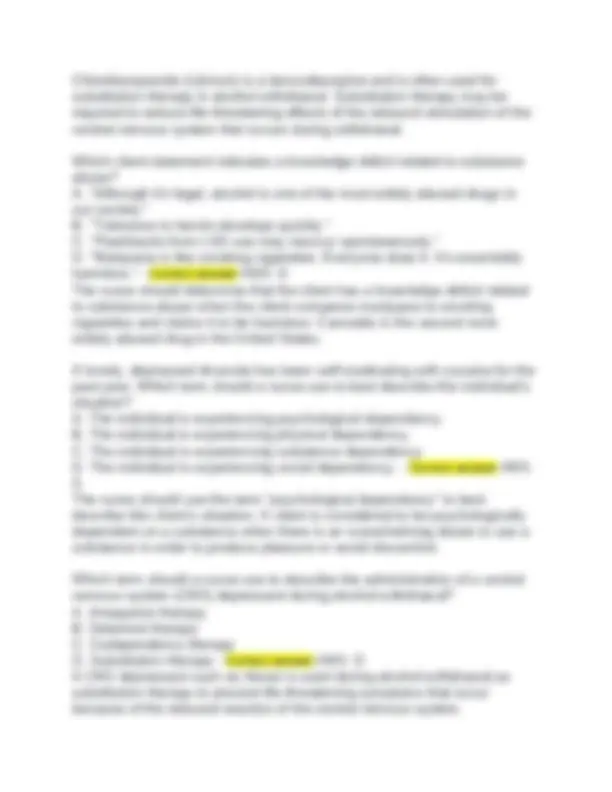
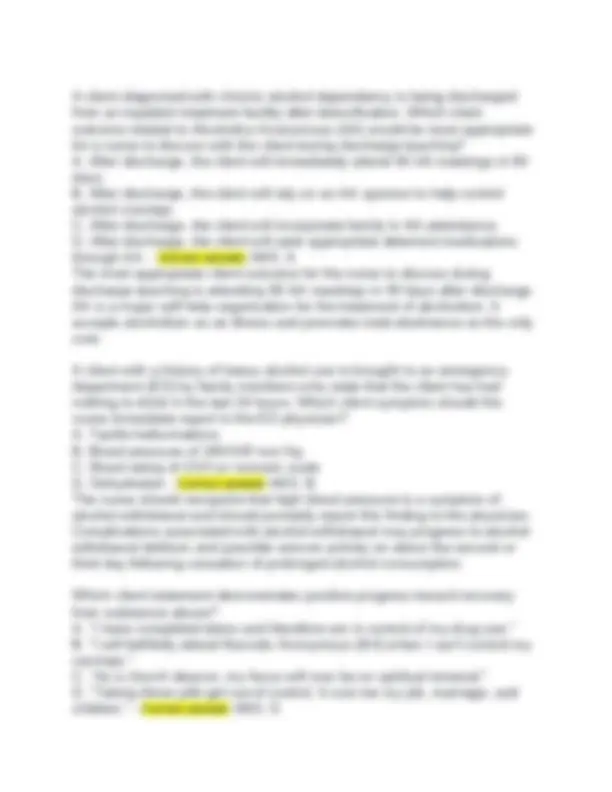
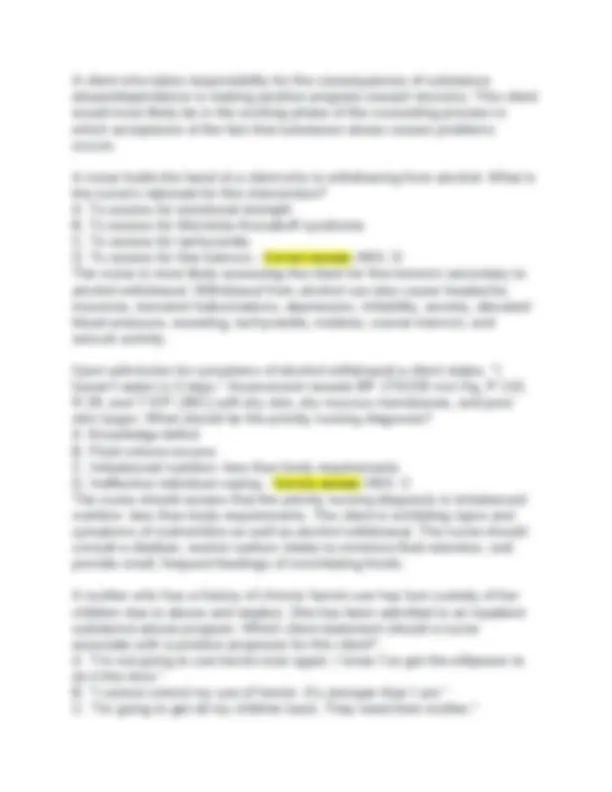
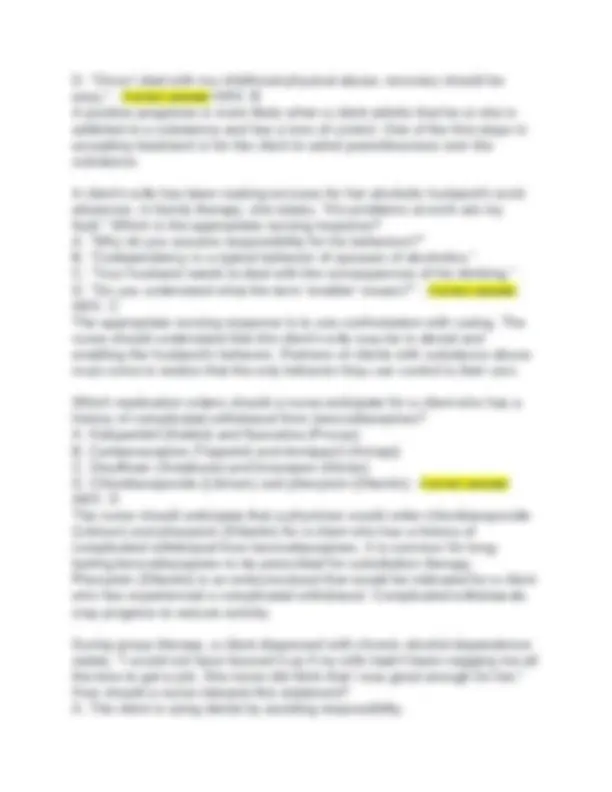
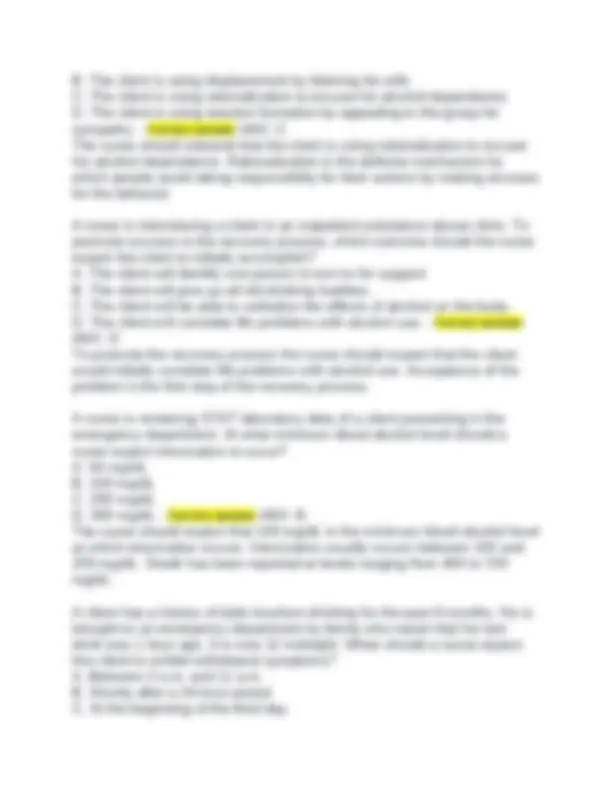
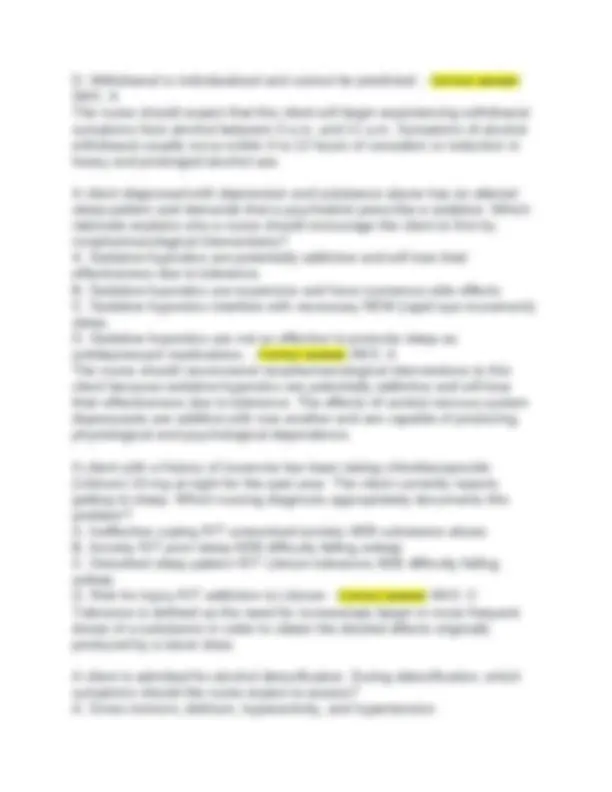
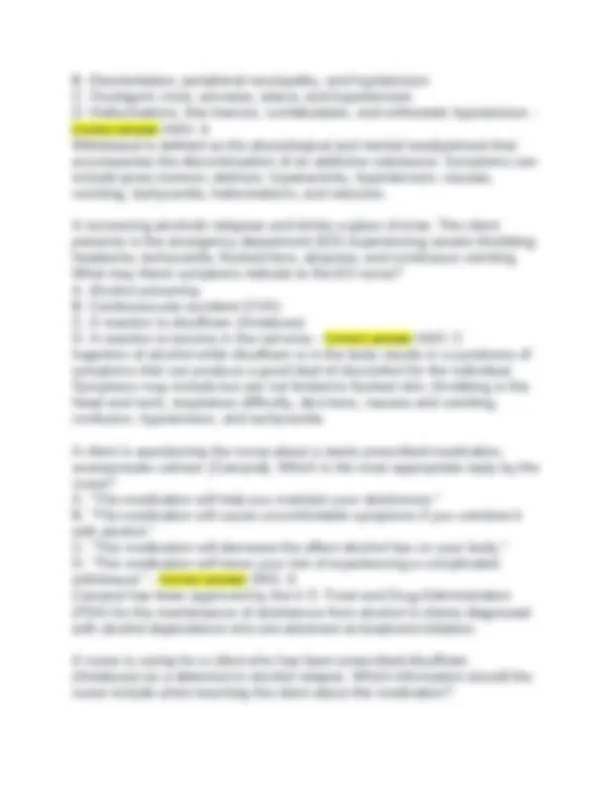
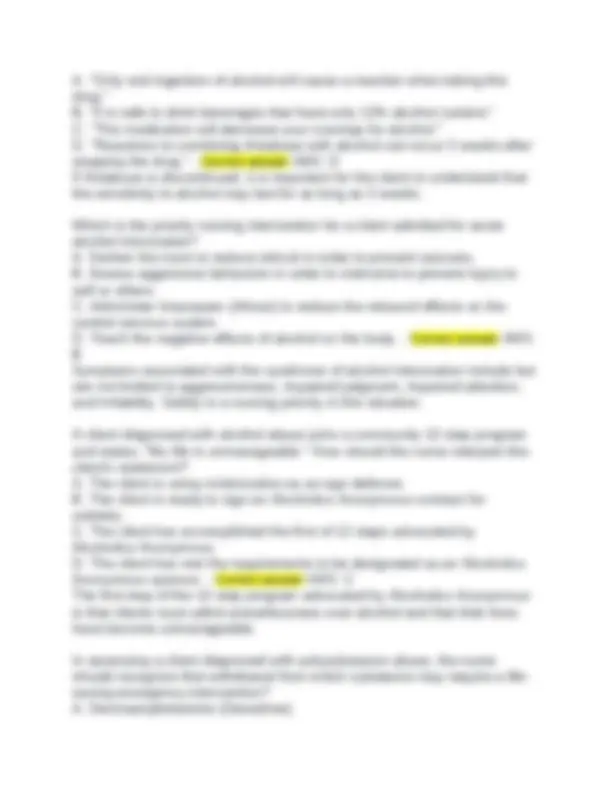
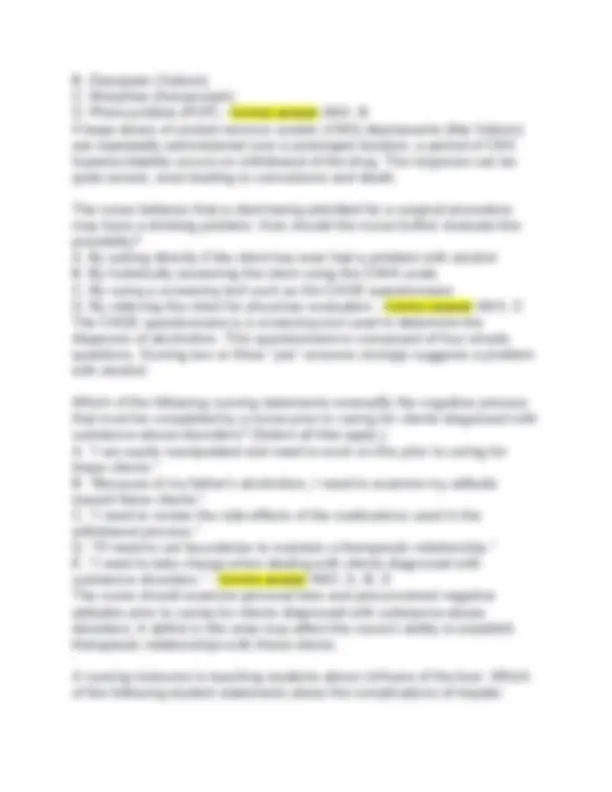
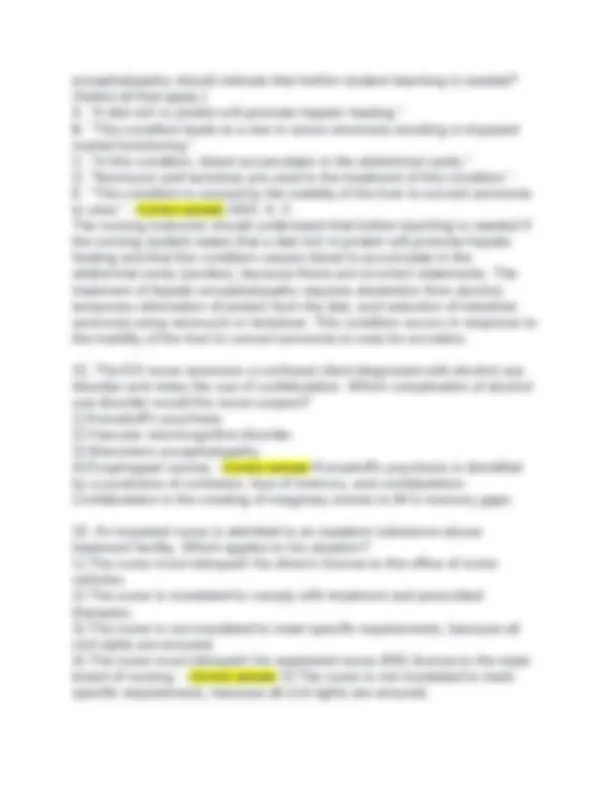
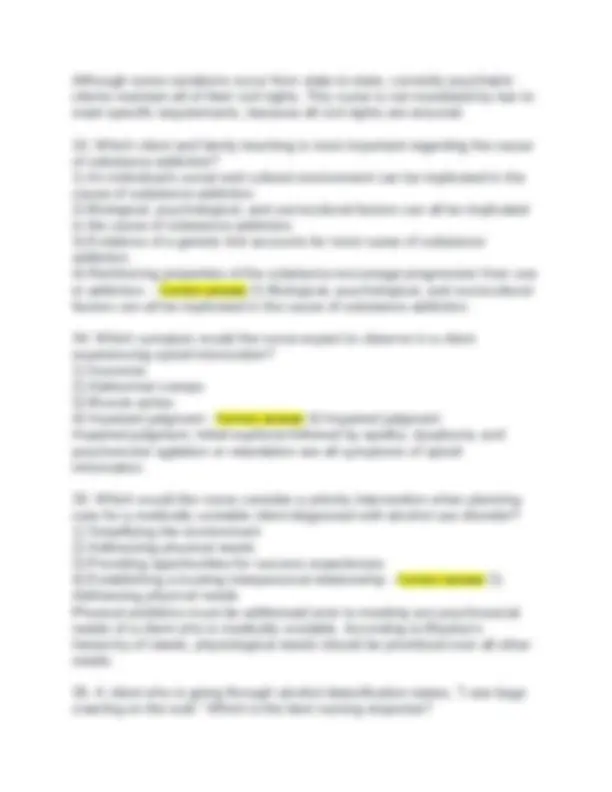
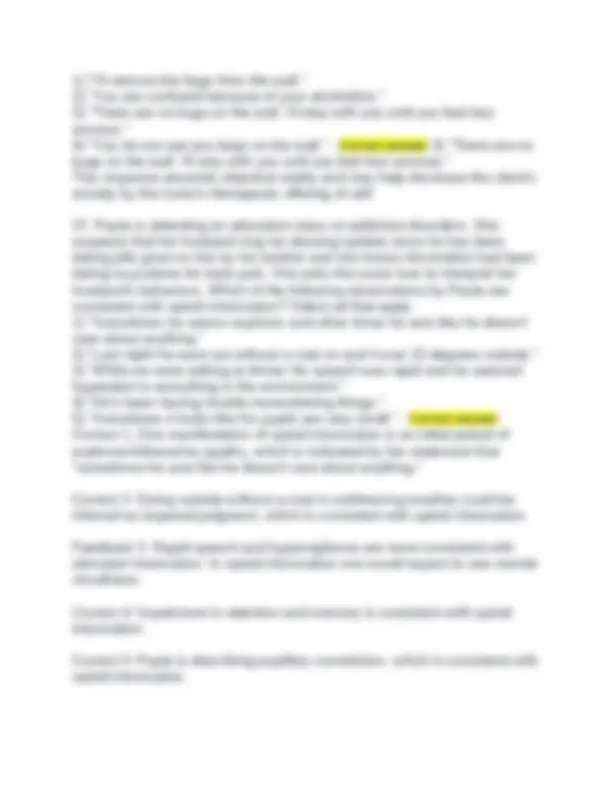
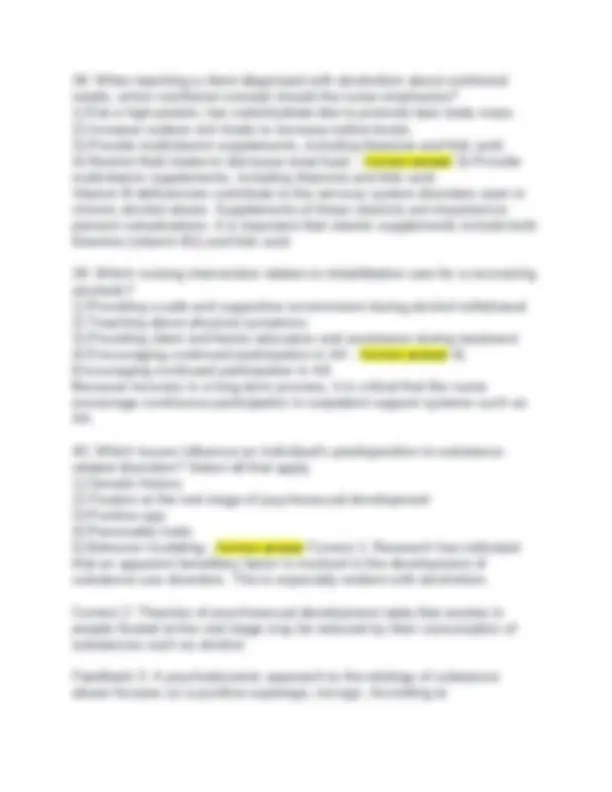
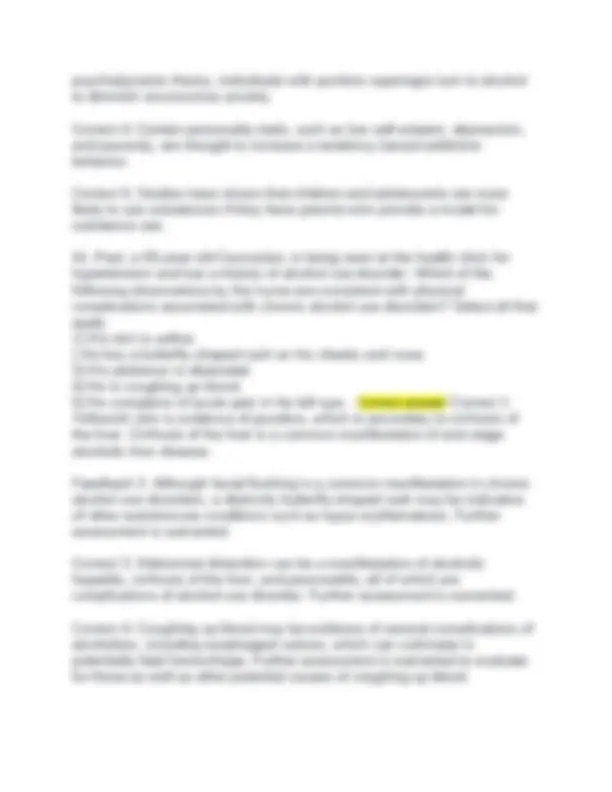
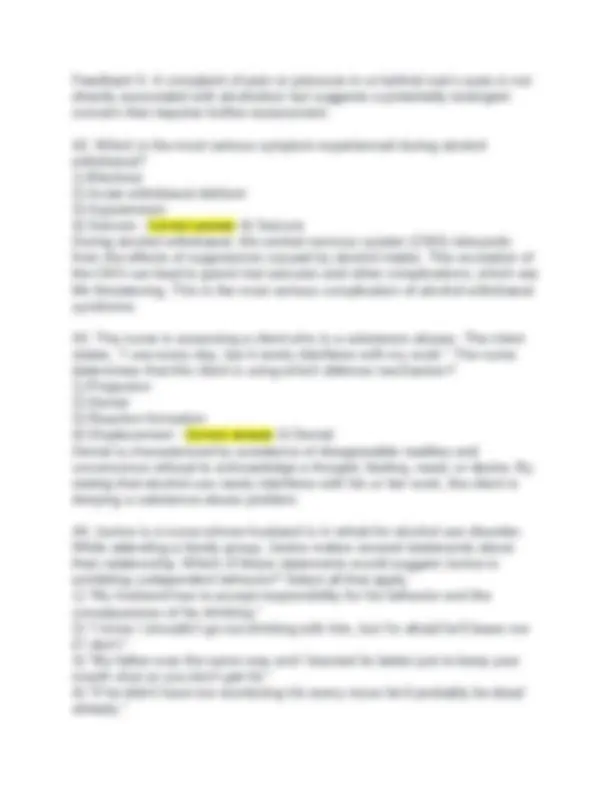
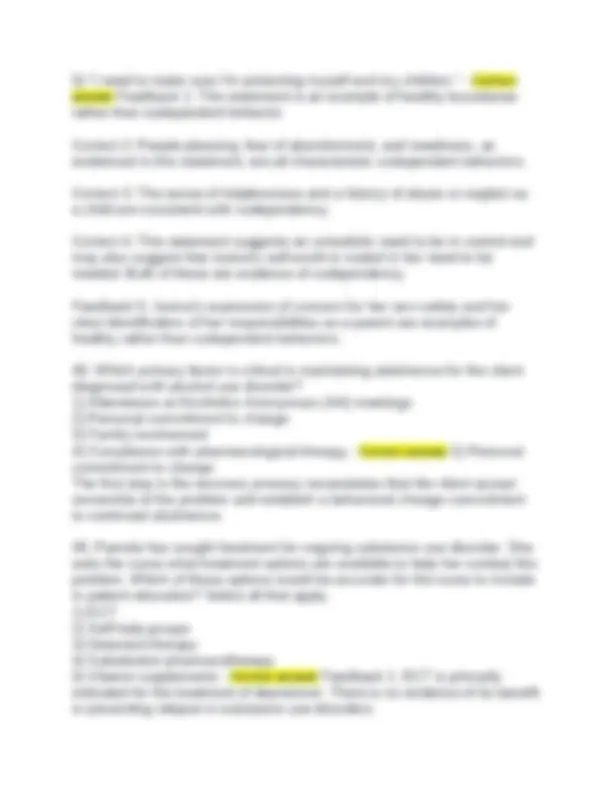
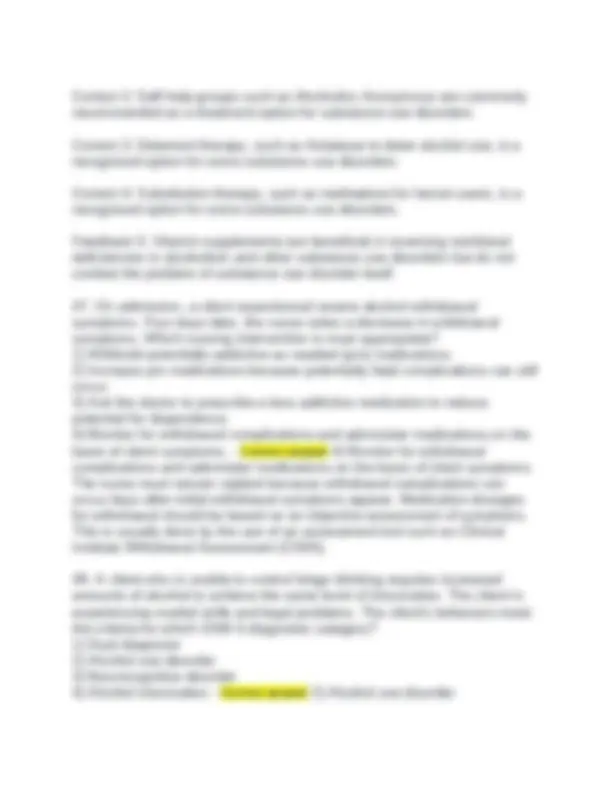
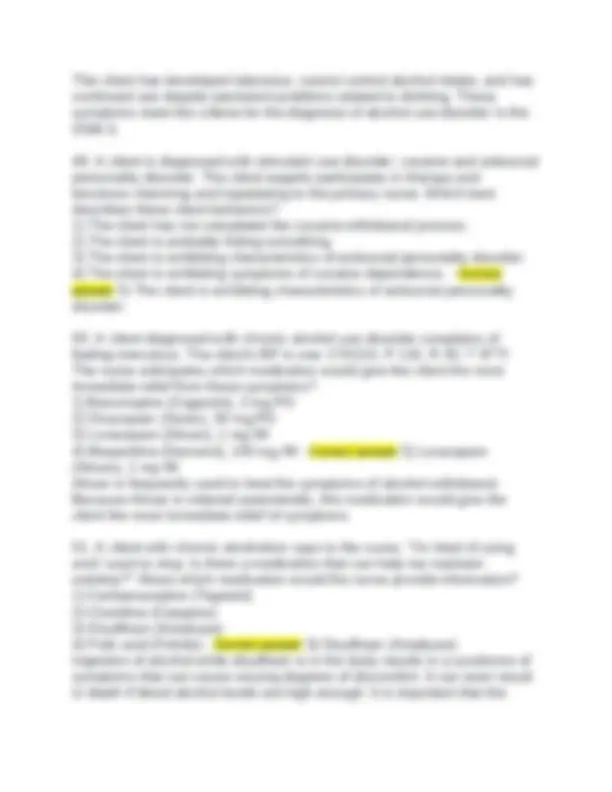
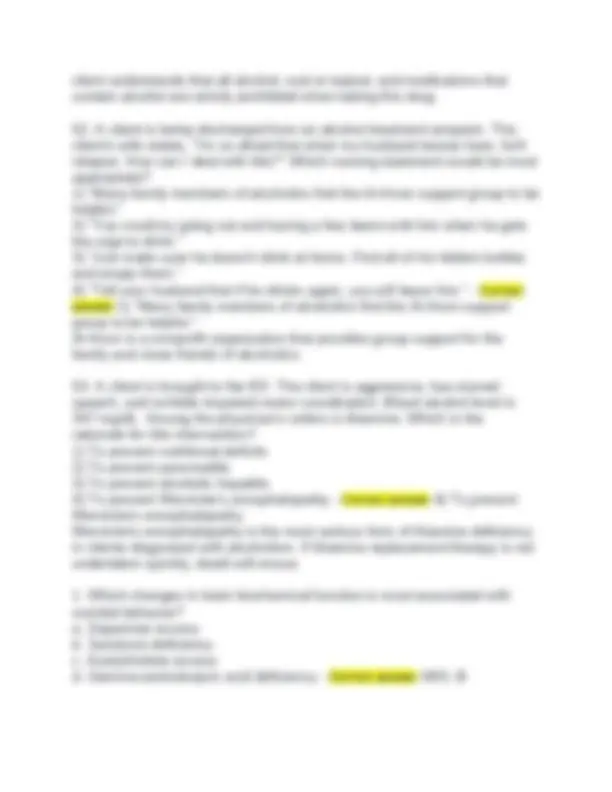
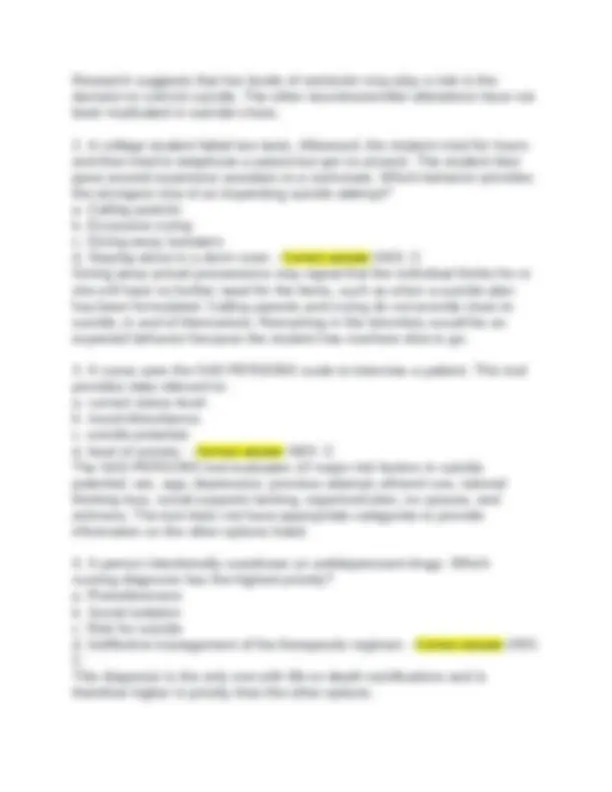
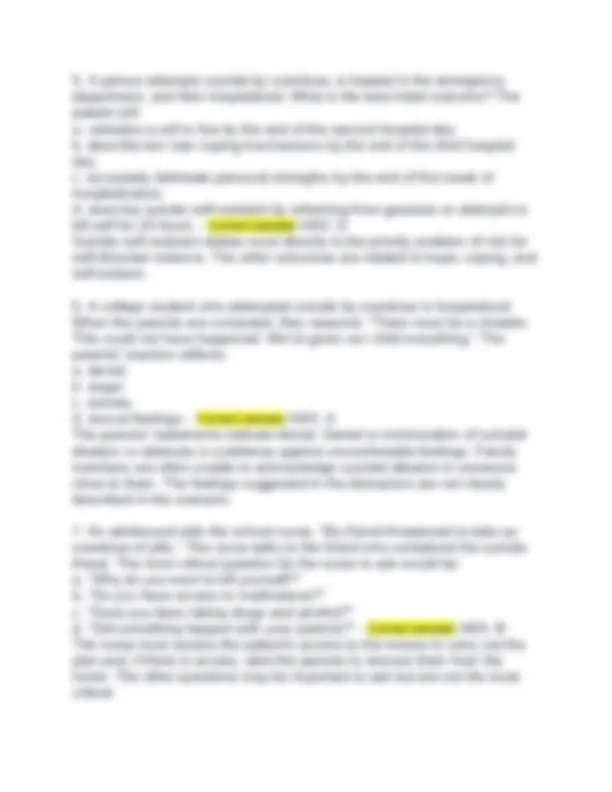
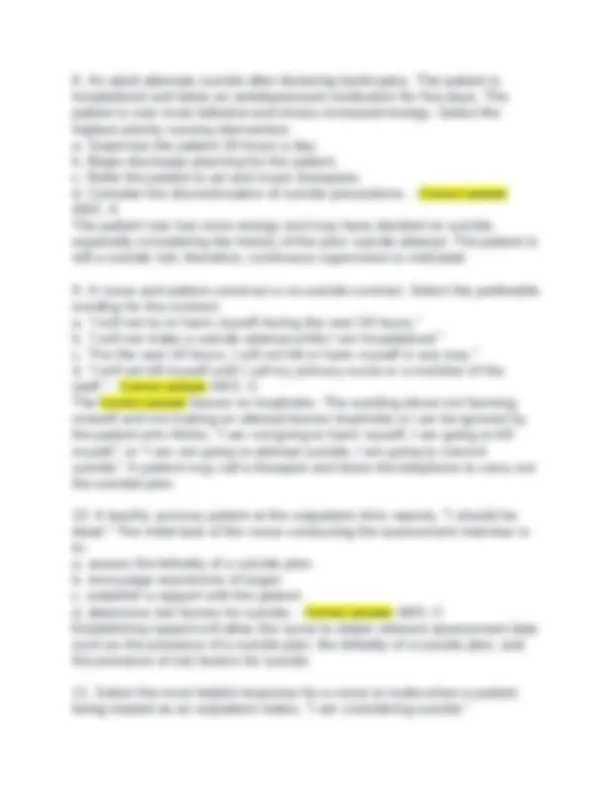
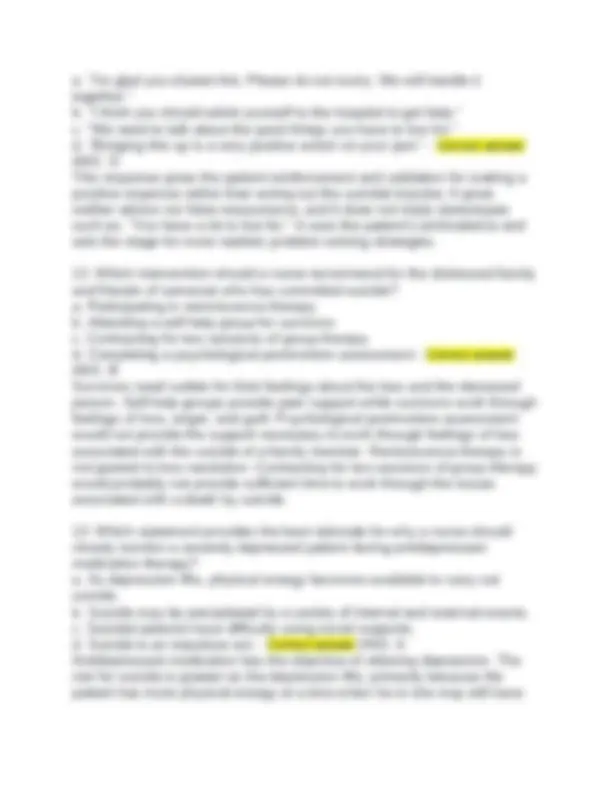
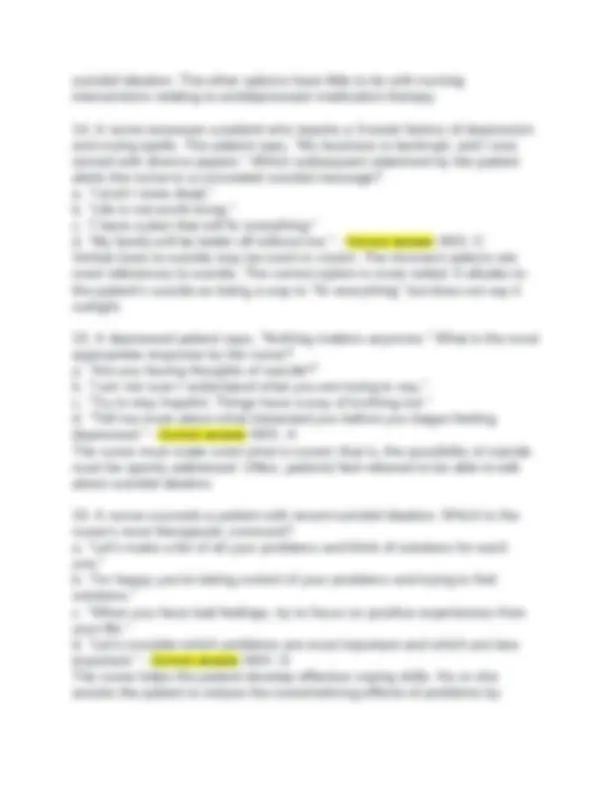
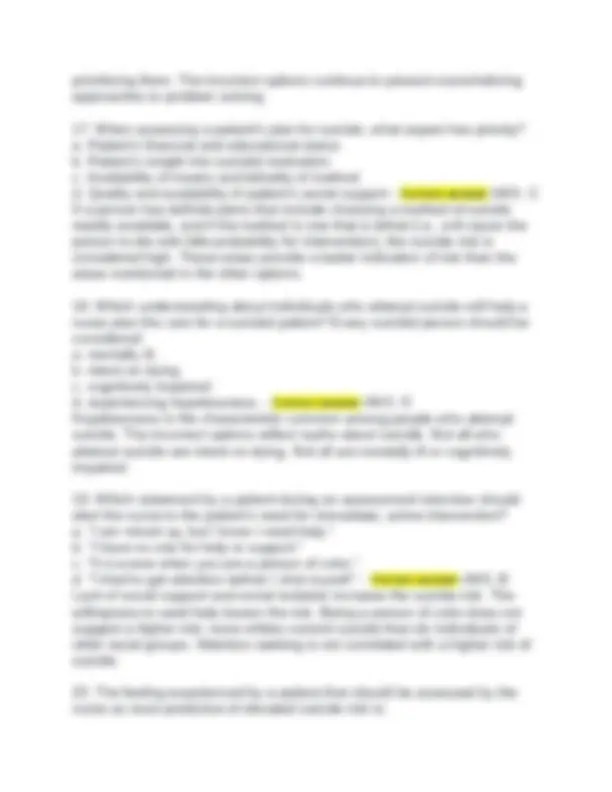
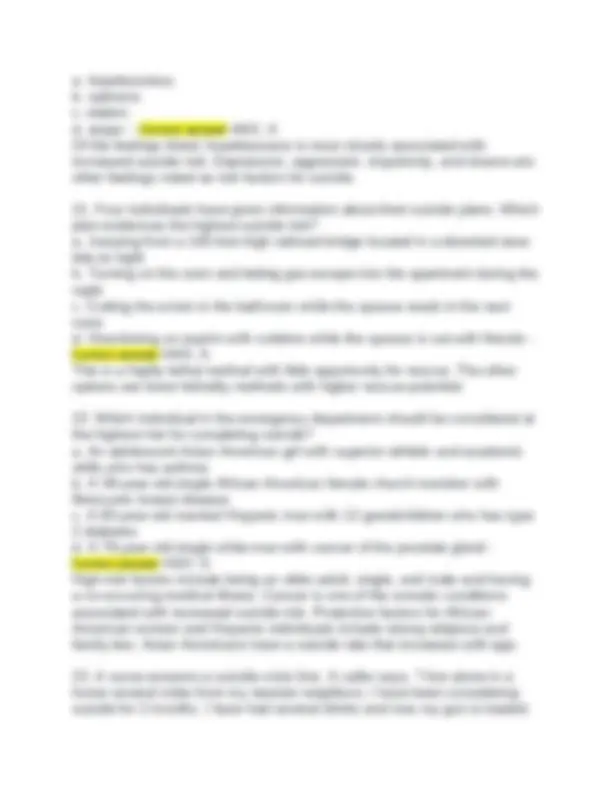
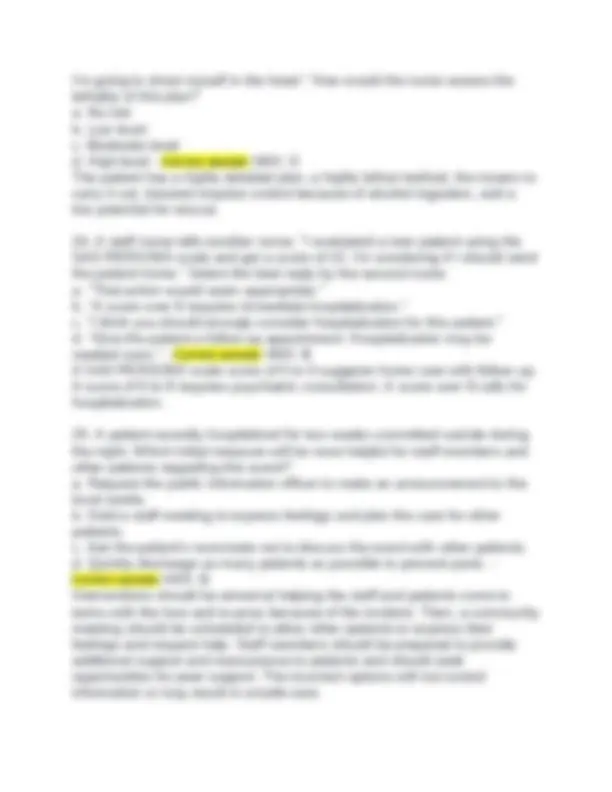
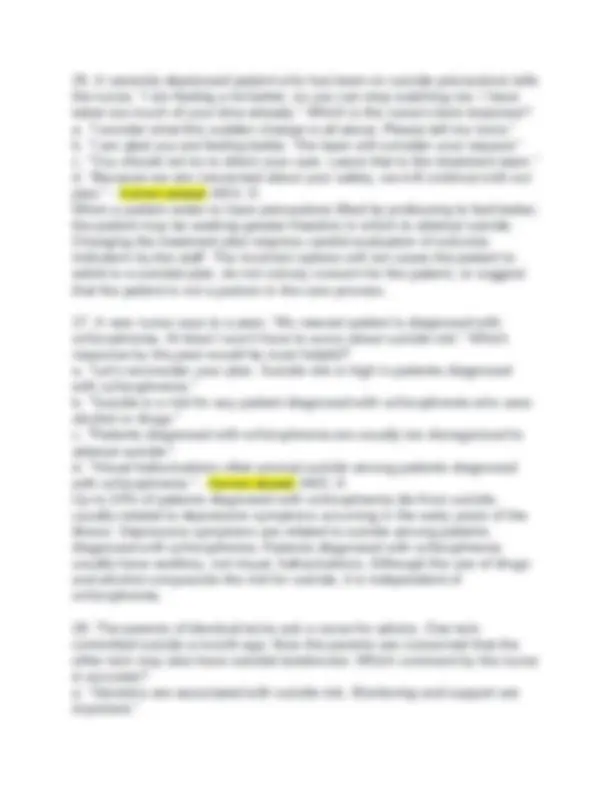


Study with the several resources on Docsity

Earn points by helping other students or get them with a premium plan


Prepare for your exams
Study with the several resources on Docsity

Earn points to download
Earn points by helping other students or get them with a premium plan
Community
Ask the community for help and clear up your study doubts
Discover the best universities in your country according to Docsity users
Free resources
Download our free guides on studying techniques, anxiety management strategies, and thesis advice from Docsity tutors
A comprehensive set of questions and answers related to the first 24 chapters of essentials of psychiatric mental health nursing. It covers key concepts and clinical scenarios, offering insights into the management of aggression, violence, and mental health challenges. Each question includes a detailed rationale for the correct answer, enhancing understanding and critical thinking skills.
Typology: Exams
1 / 236

This page cannot be seen from the preview
Don't miss anything!





























































































c. Disturbed thought processes d. Risk for other-directed violence - Correct answer ANS: D The defining characteristics for Risk for other-directed violence include a history of being abused as a child, having committed other violent acts, and demonstrating poor impulse control. The defining characteristics for the other diagnoses are not present in this scenario.
d. Preoccupation with the incident - Correct answer ANS: C The desire for revenge signals an urgent need for professional supervision to work through anger and counter the aggressive feelings. The distracters are normal in a person who has been assaulted. Nurses are usually relieved with crisis intervention and follow-up designed to give support, help the individual regain a sense of control, and make sense of the event.
d. Administer an antipsychotic or antianxiety medication. - Correct answer ANS: A Anger has a strong cognitive component; therefore using cognition to manage anger is logical. The incorrect options do nothing to help the patient learn anger management.
d. Give the patient lorazepam (Ativan) every 4 hours to reduce anxiety. - Correct answer ANS: B Identifying trigger incidents allows the patient and nurse to plan interventions to reduce irritation and frustration that lead to acting out anger and to put more adaptive coping strategies eventually into practice.
a. Explain that the patient's condition is not life threatening. b. Periodically provide an update and progress report on the patient. c. Explain that all patients are treated in order, based on their medical needs. d. Suggest that the spouse return home until the patient's treatment is completed. - Correct answer ANS: B Periodic updates reduce anxiety and defuse anger. This strategy acknowledges the spouse's presence and concerns. The incorrect options would be likely to increase anger because they imply that the anxiety is inappropriate.
Emergency seclusion can be effected by a credentialed nurse but must be followed by securing a medical order within the period specified by the state and agency. The incorrect options are not immediately necessary from a legal standpoint.
limb. This system could leave one or two limbs unrestrained. Approaching in full view of the patient reduces suspicion.
a. Chronic low self-esteem, related to negative feedback from parents b. Deficient knowledge, related to interpersonal skills with parents c. Disturbed personal identity, related to negative self-evaluation d. Complicated grieving, related to poor academic performance - Correct answer a. Chronic low self-esteem, related to negative feedback from parents
c. Support the caregiver to grieve the loss of the mother's ability to function. d. Teach the family how to give physical care more effectively and efficiently. - Correct answer b. Secure additional resources for the mother's evening and night care.
b. Memory of the rape is less vivid and frightening. c. Physical symptoms of pain and discomfort are no longer present. d. Patient agrees to keep a follow-up appointment with the rape crisis center. - Correct answer d. Patient agrees to keep a follow-up appointment with the rape crisis center.
a. After coming home intoxicated from a party, a person forces the spouse to have sex. The spouse objects. b. A person's lover pleads to have oral sex. The person gives in but then regrets the decision. c. A person is beaten, robbed, and forcibly subjected to anal penetration by an assailant. d. A physician gives anesthesia for a procedure and has intercourse with an unconscious patient. - Correct answer b. A person's lover pleads to have oral sex. The person gives in but then regrets the decision.